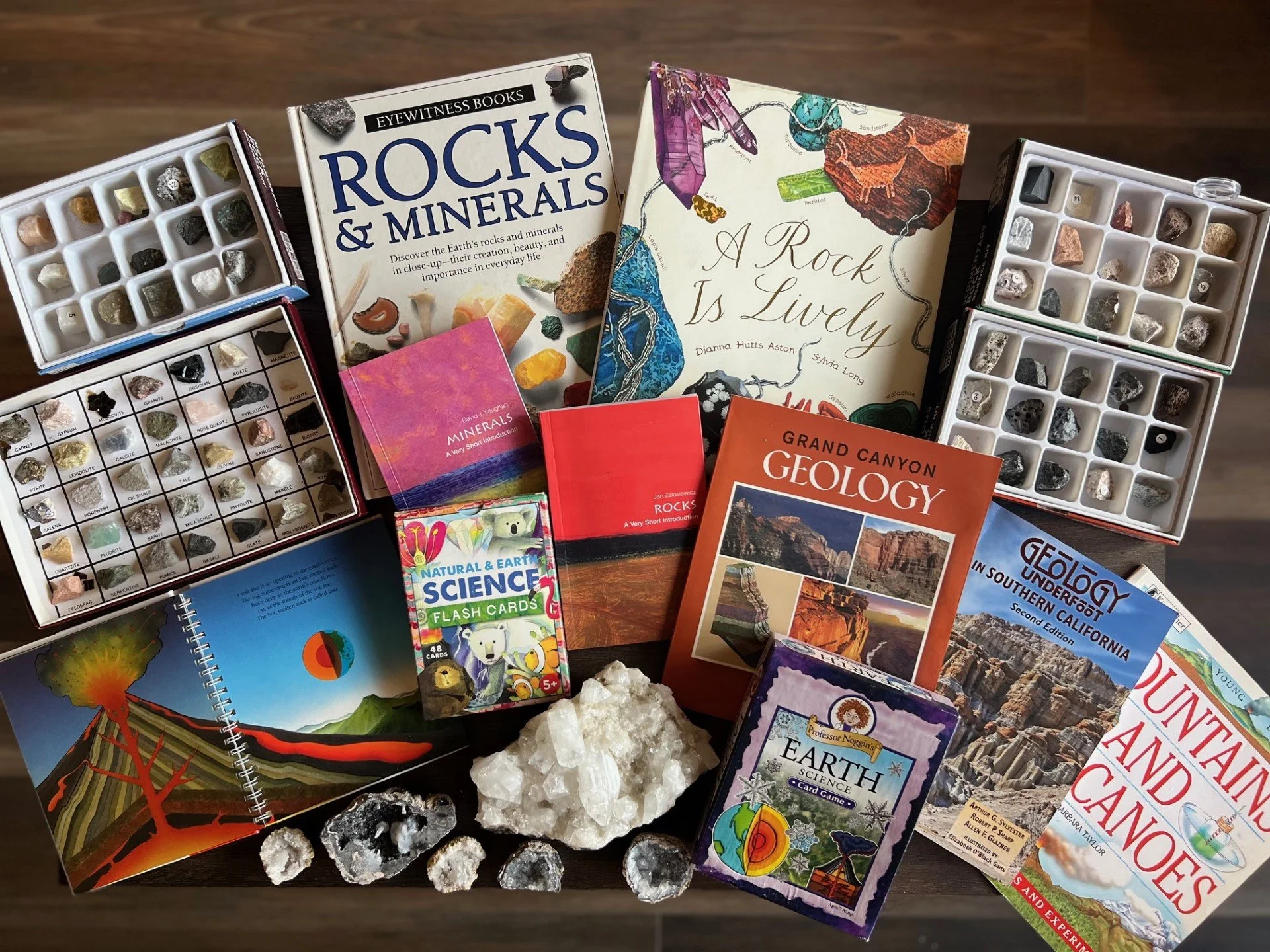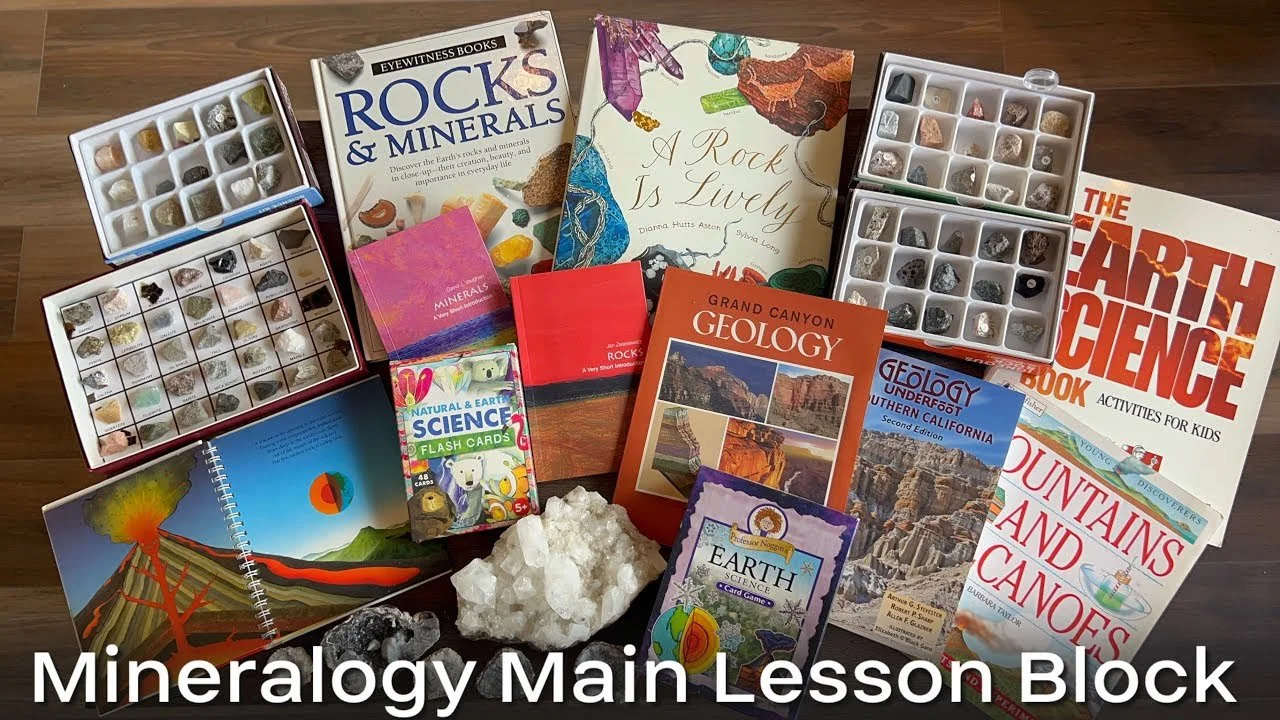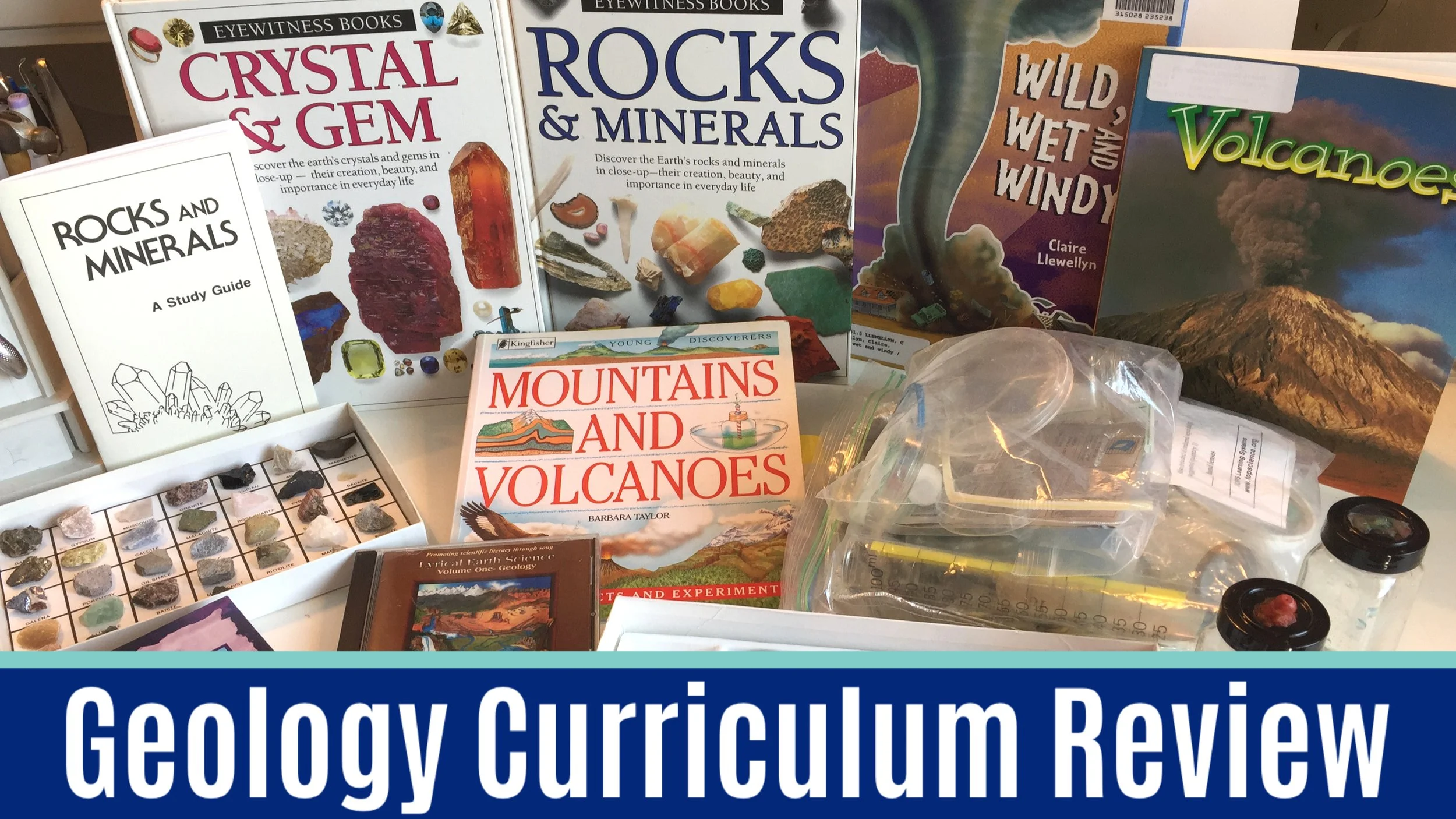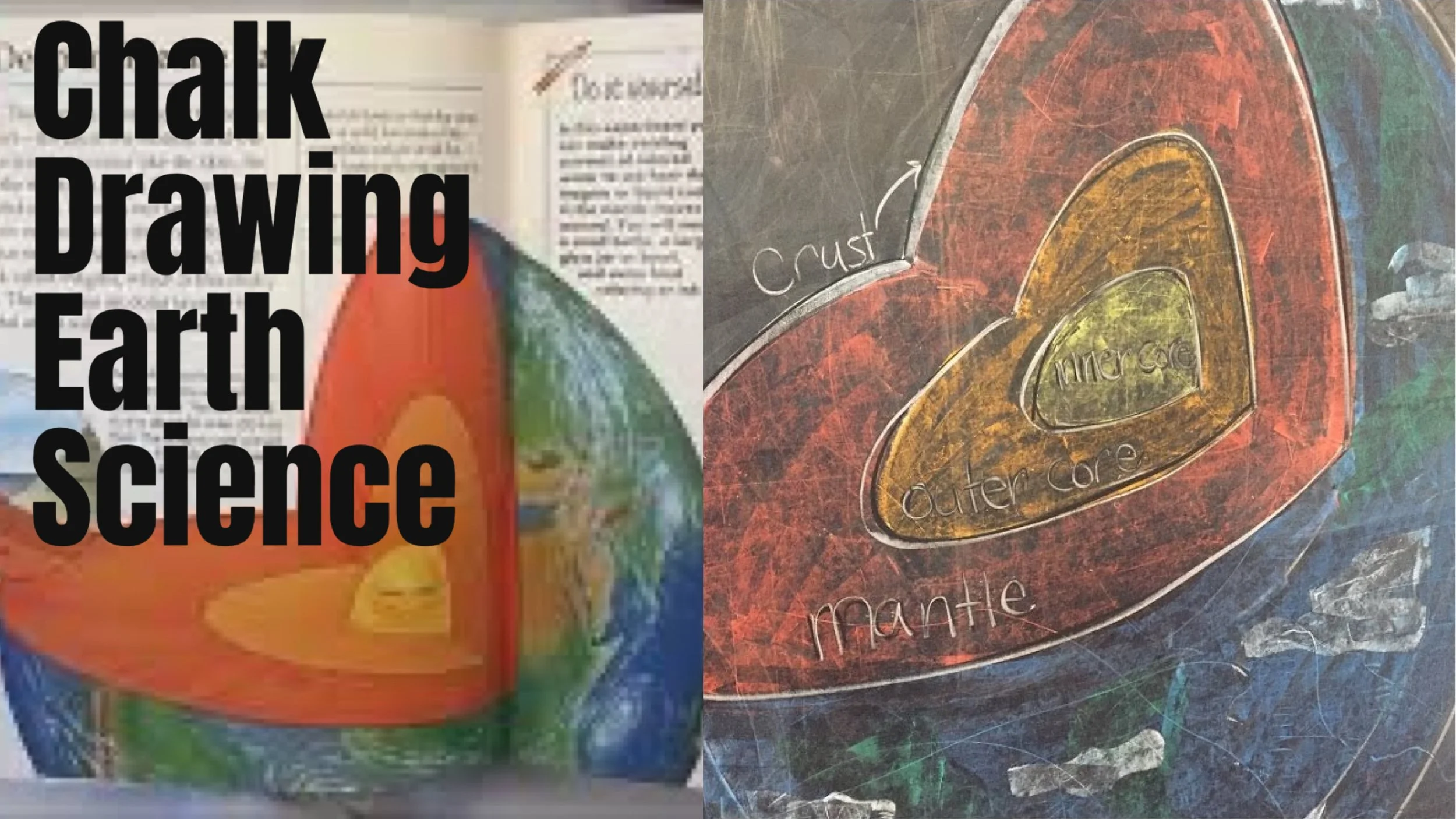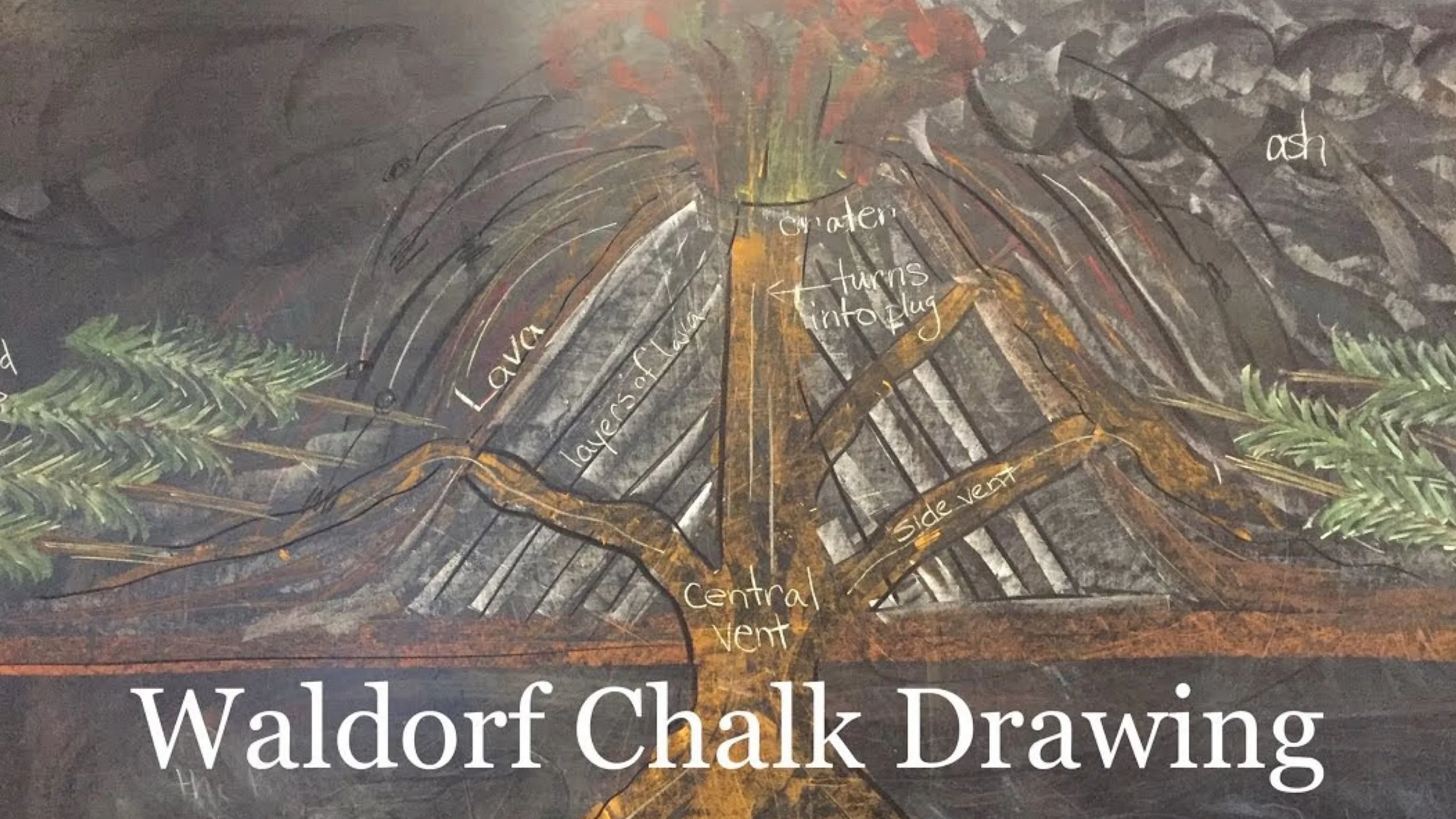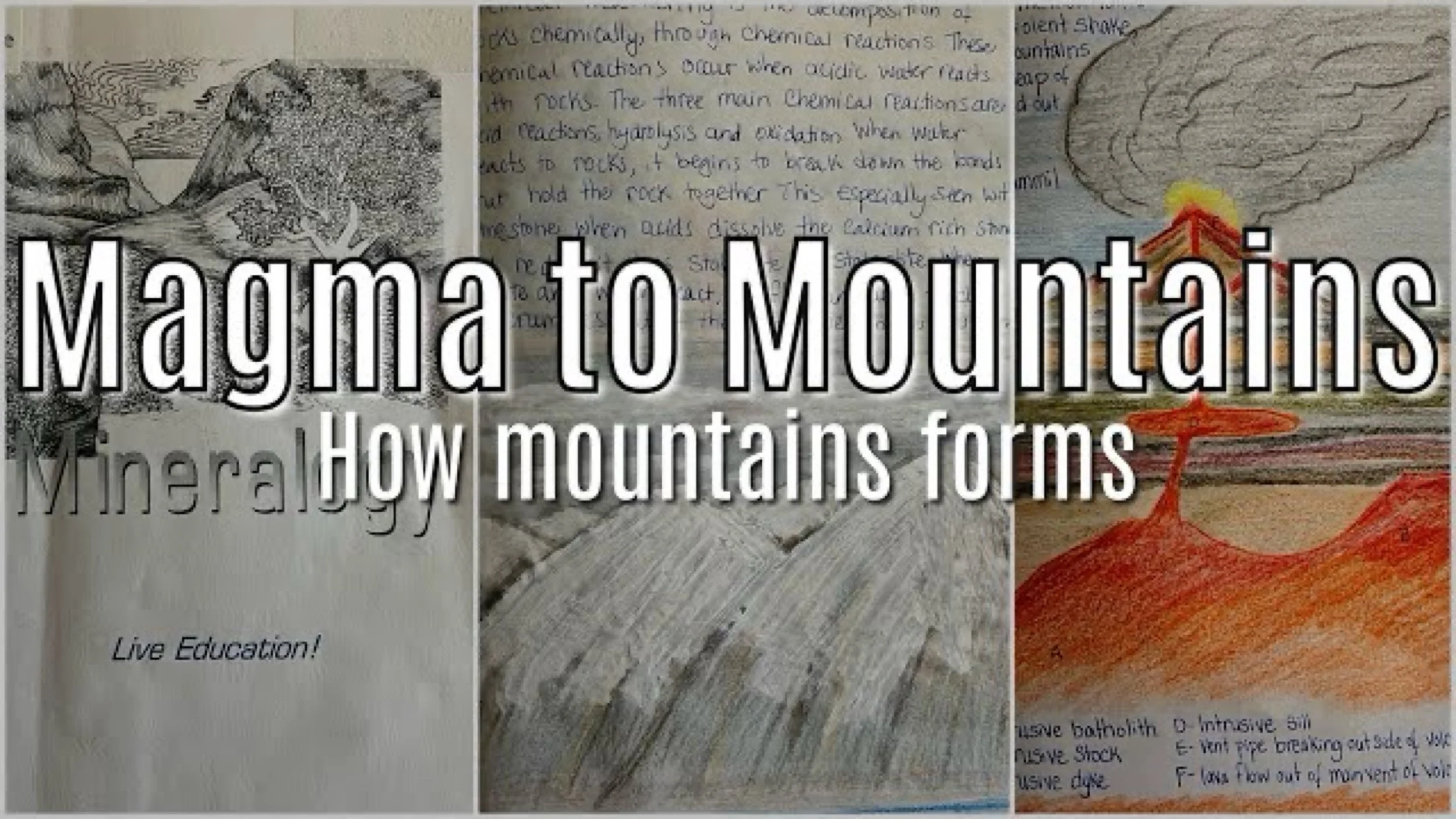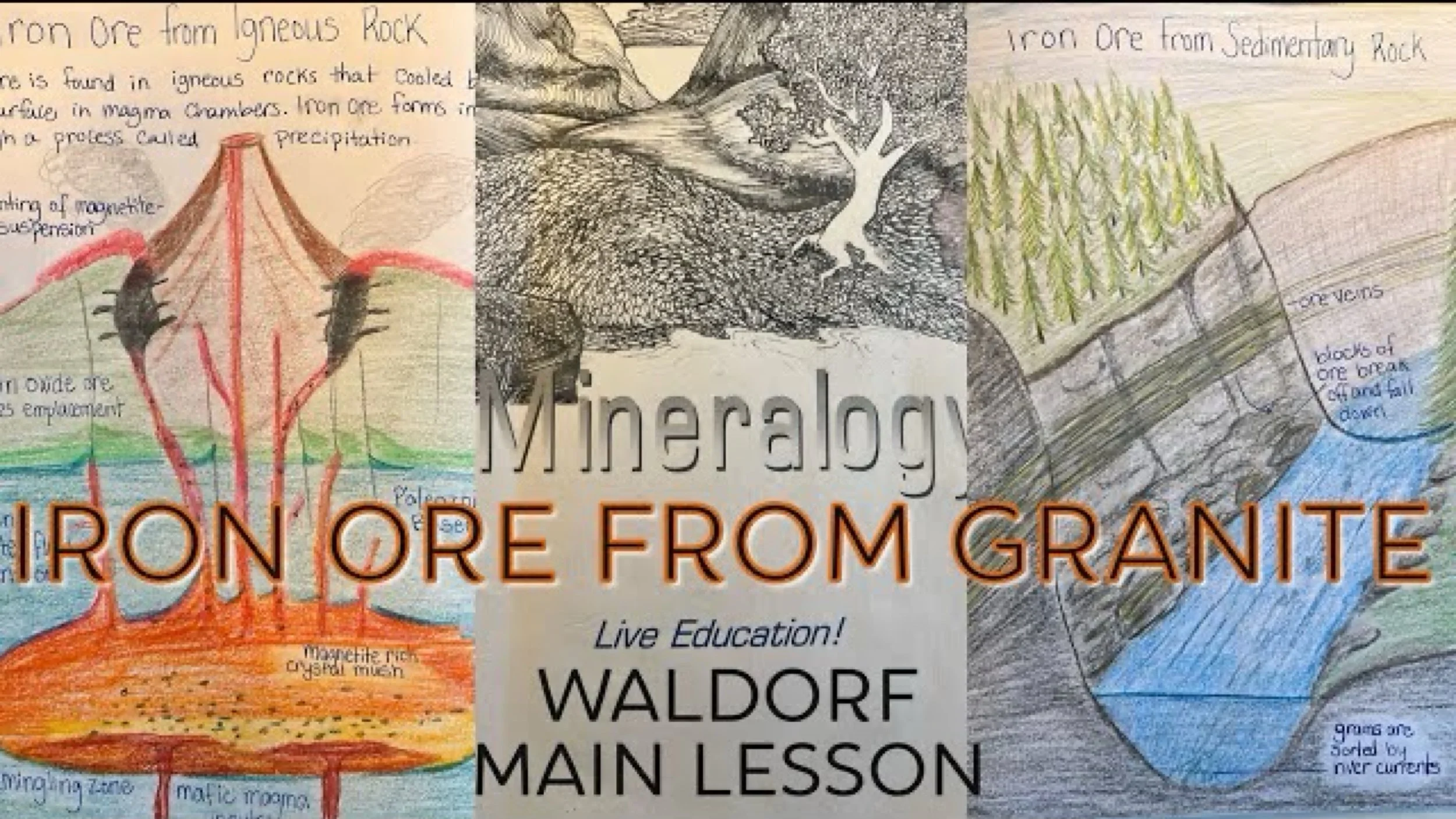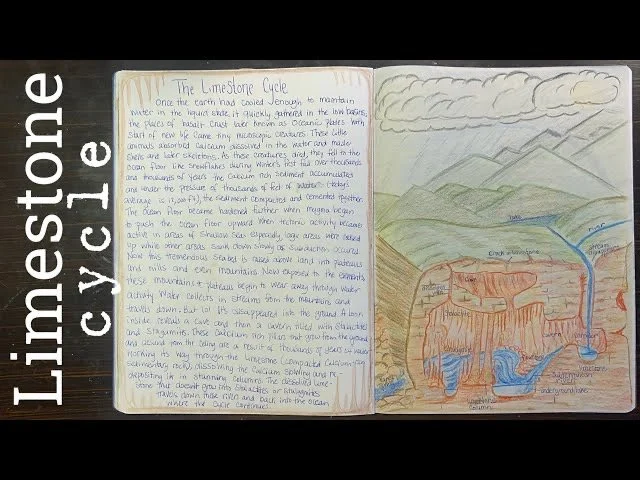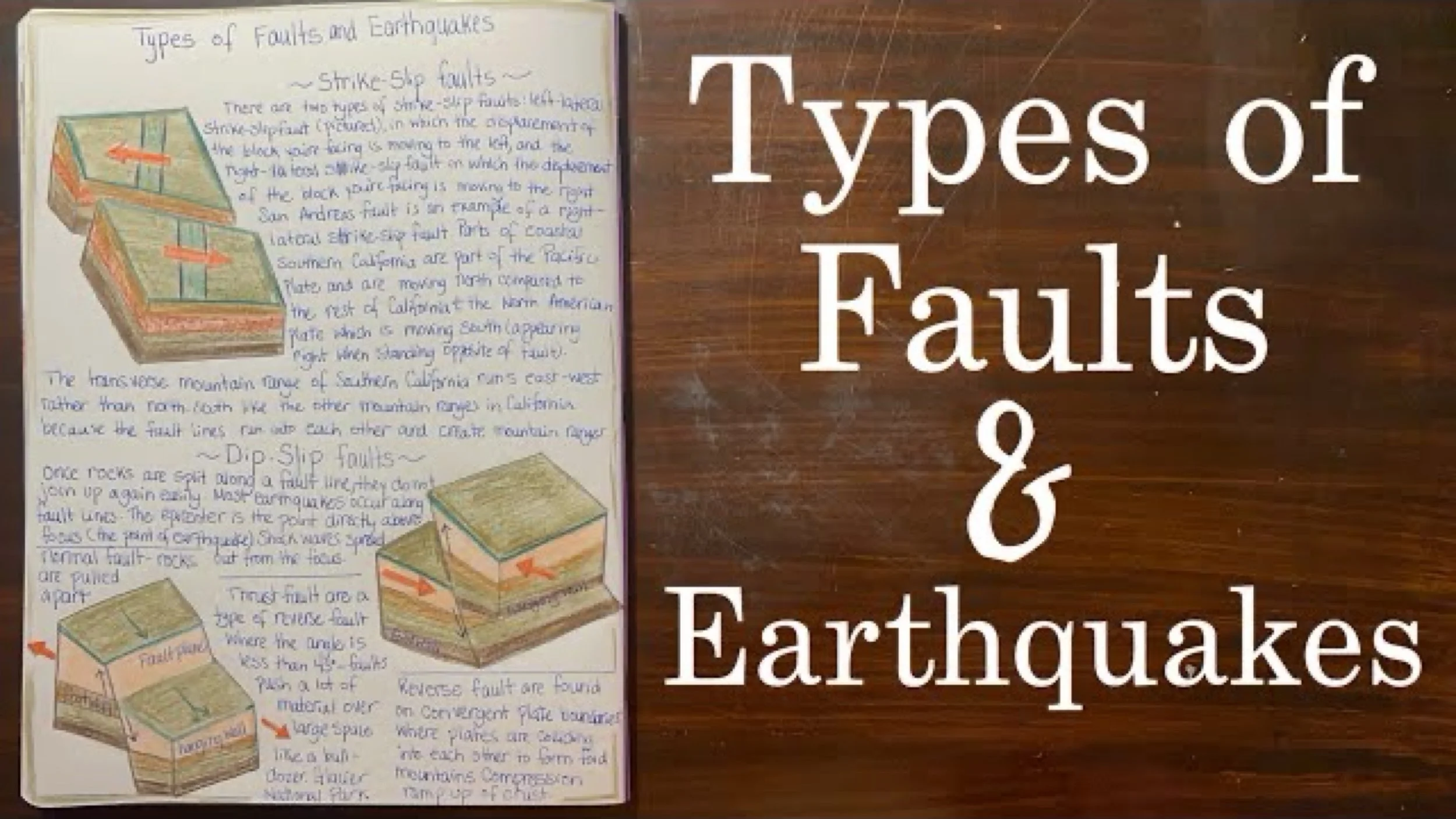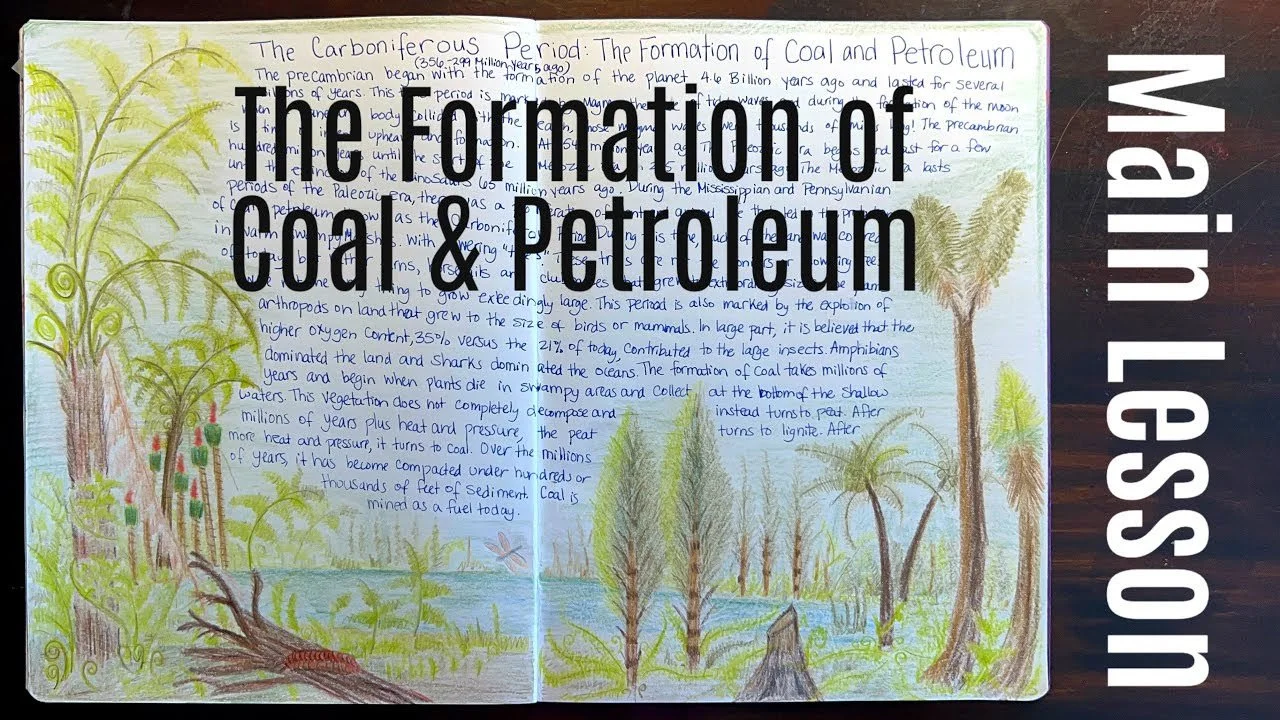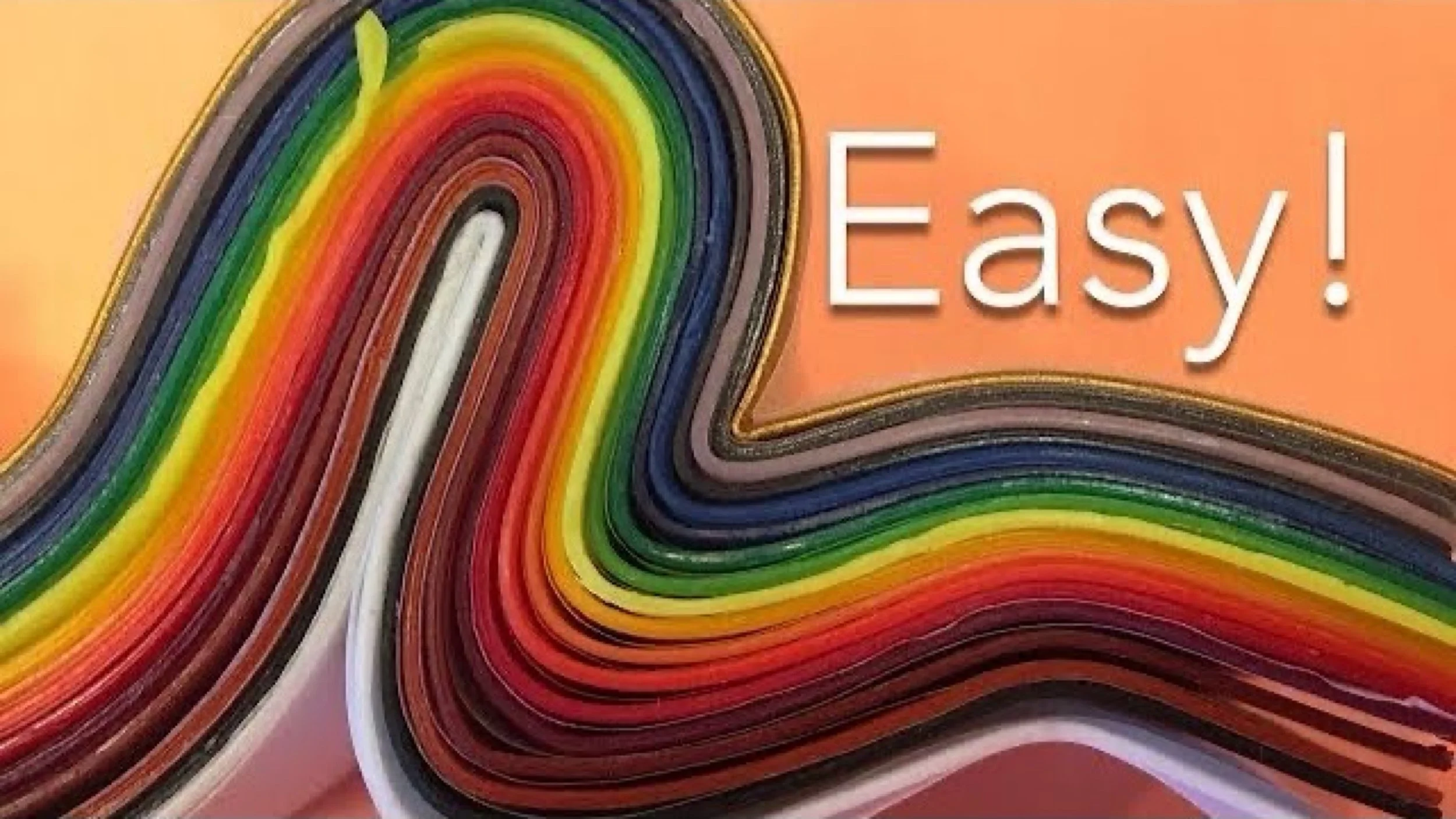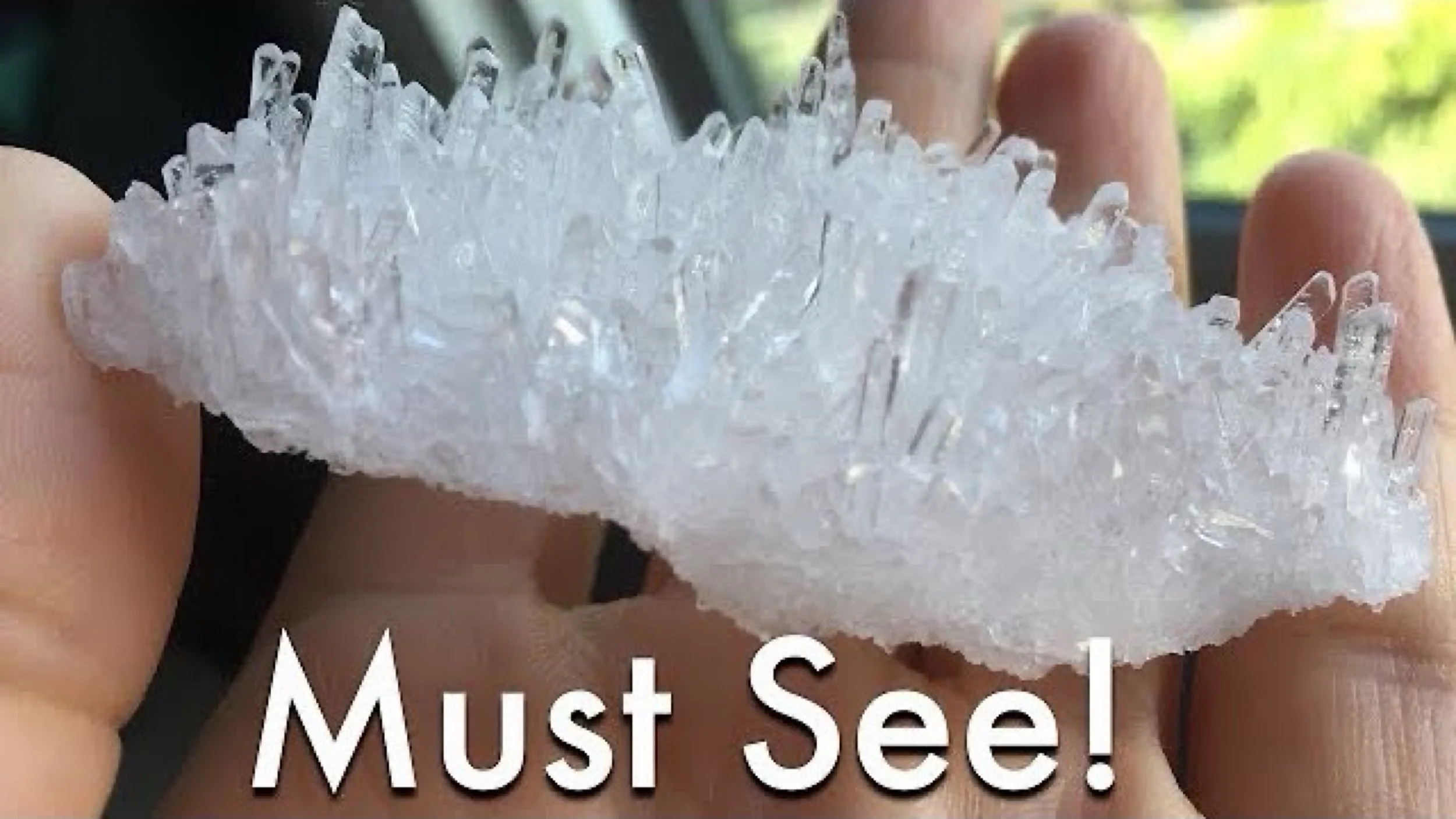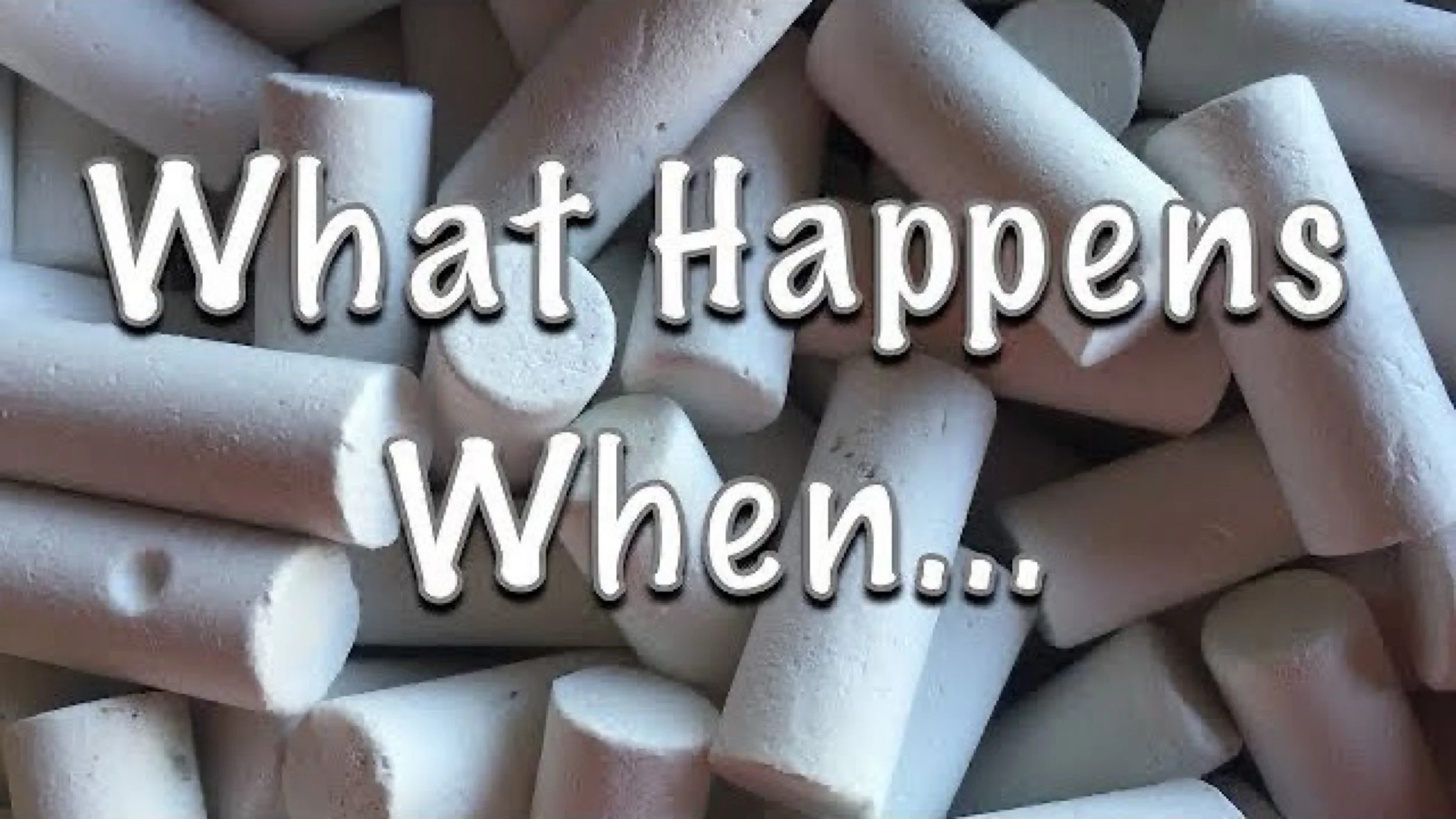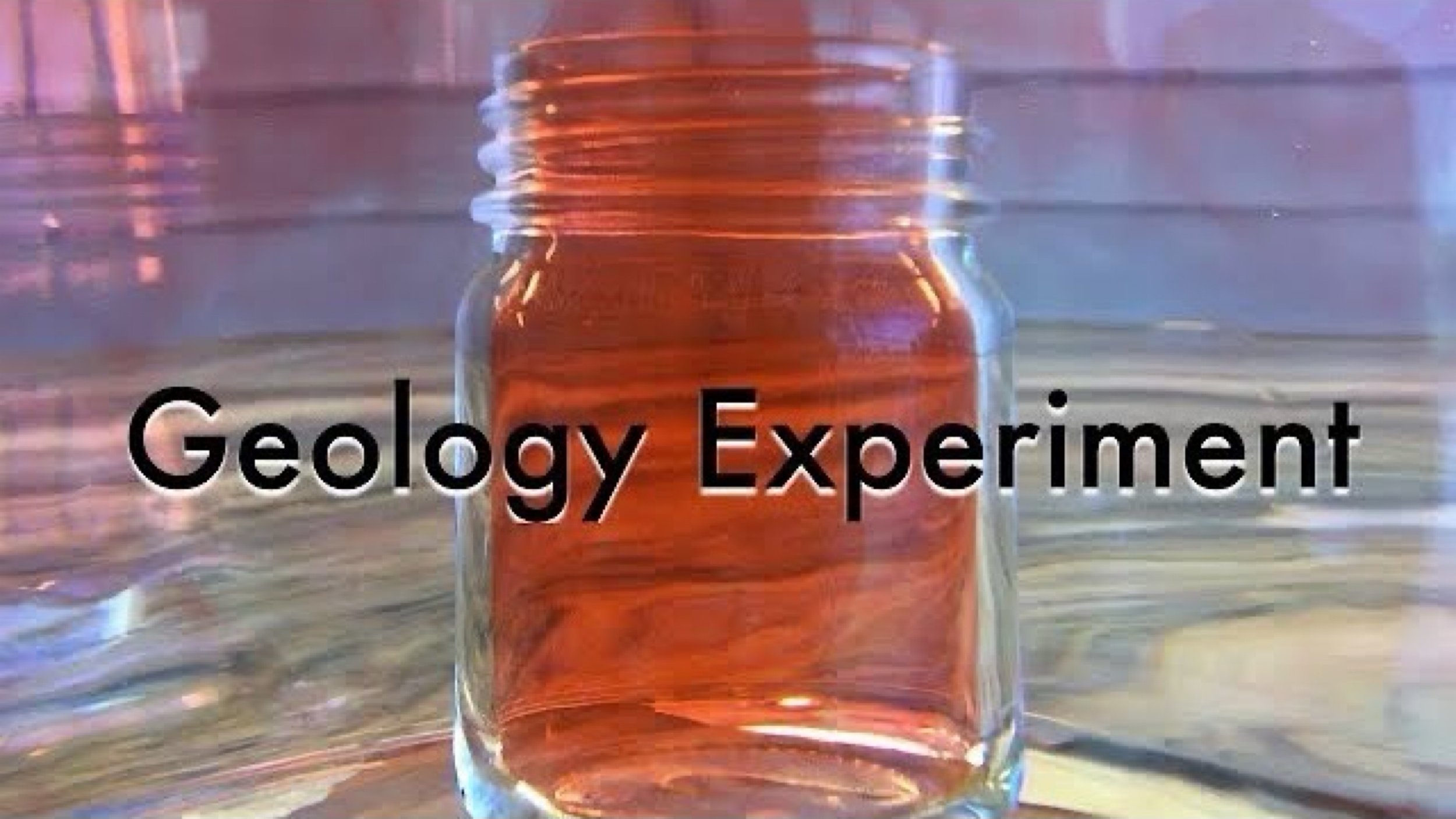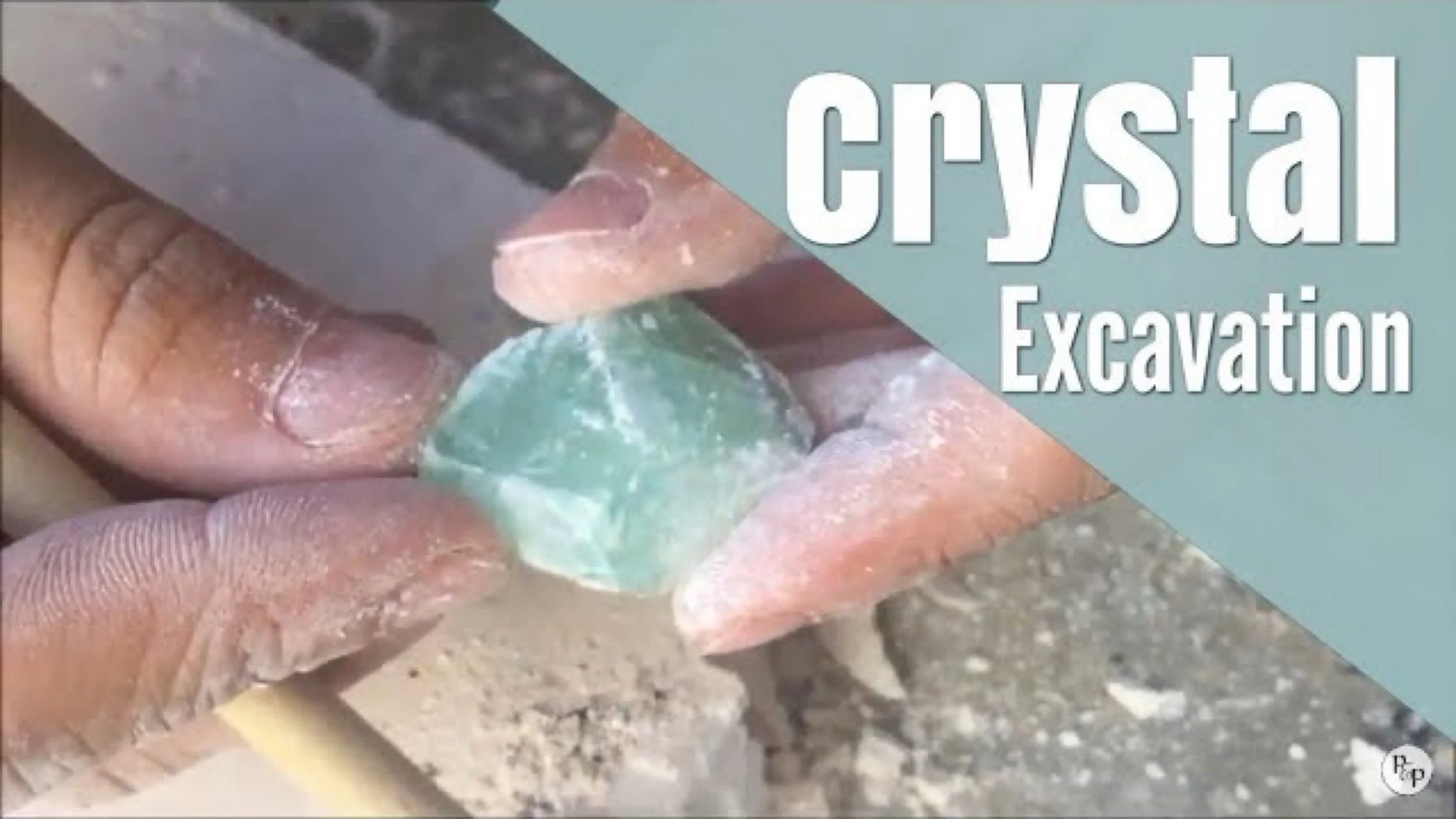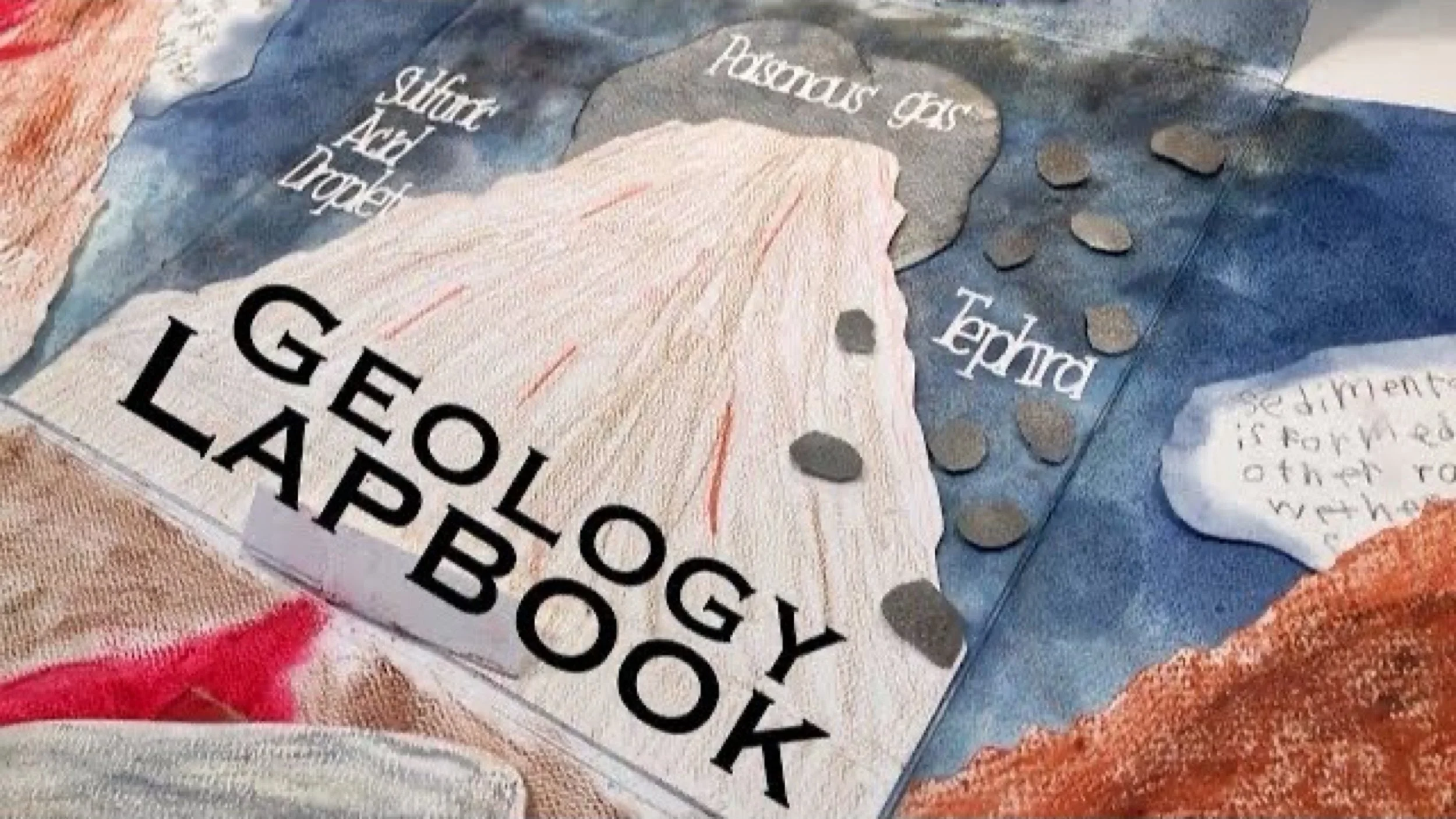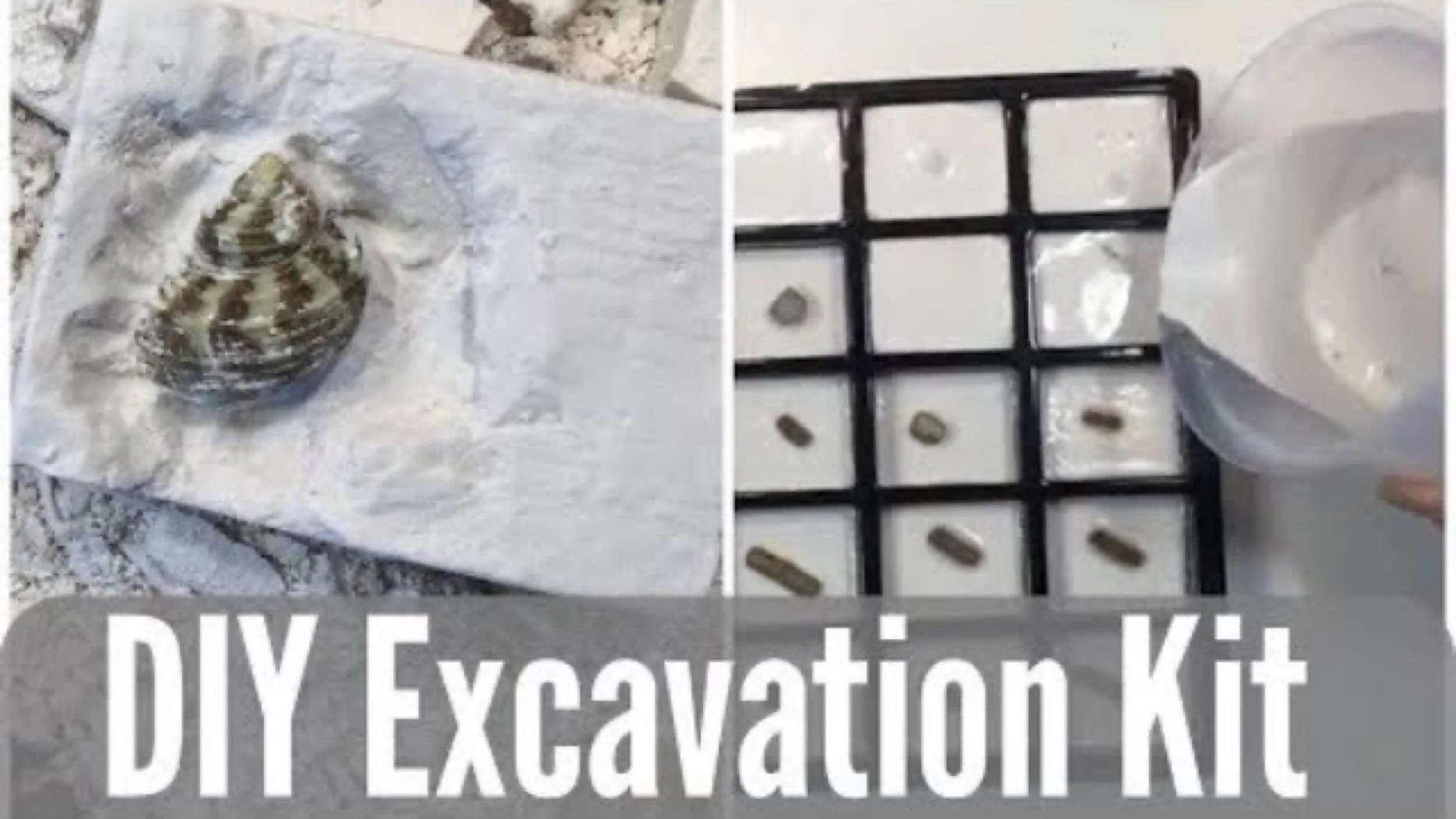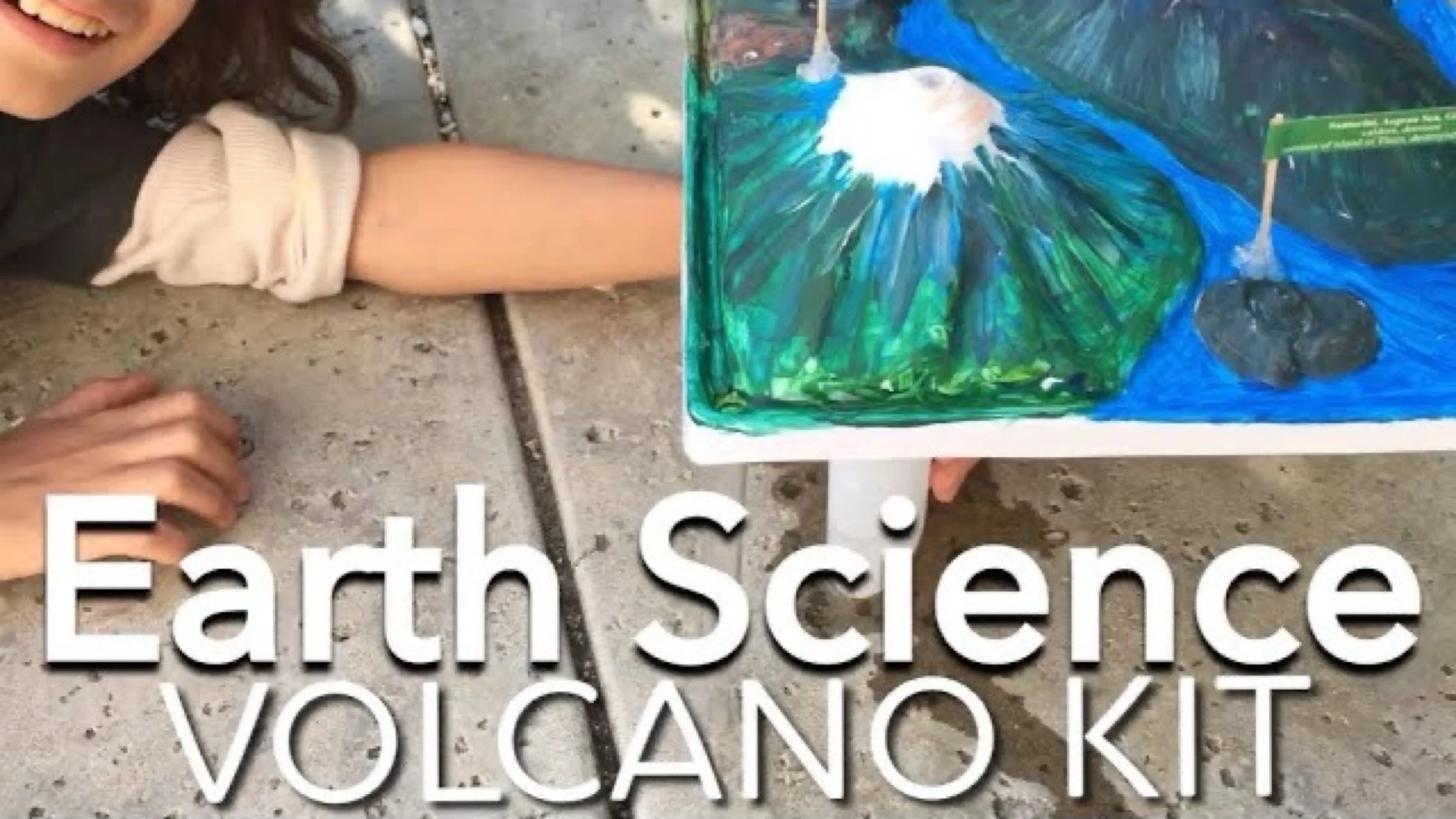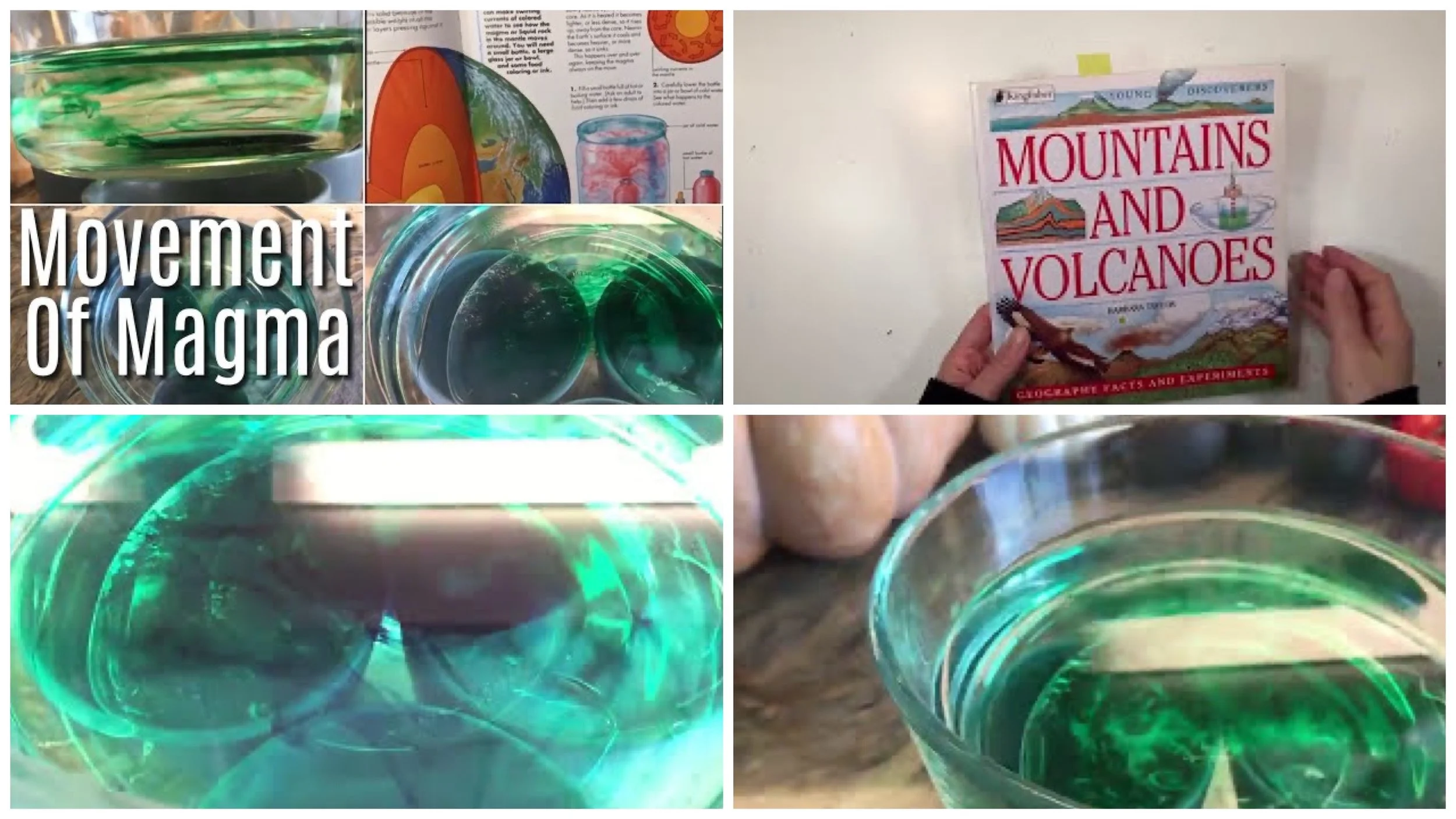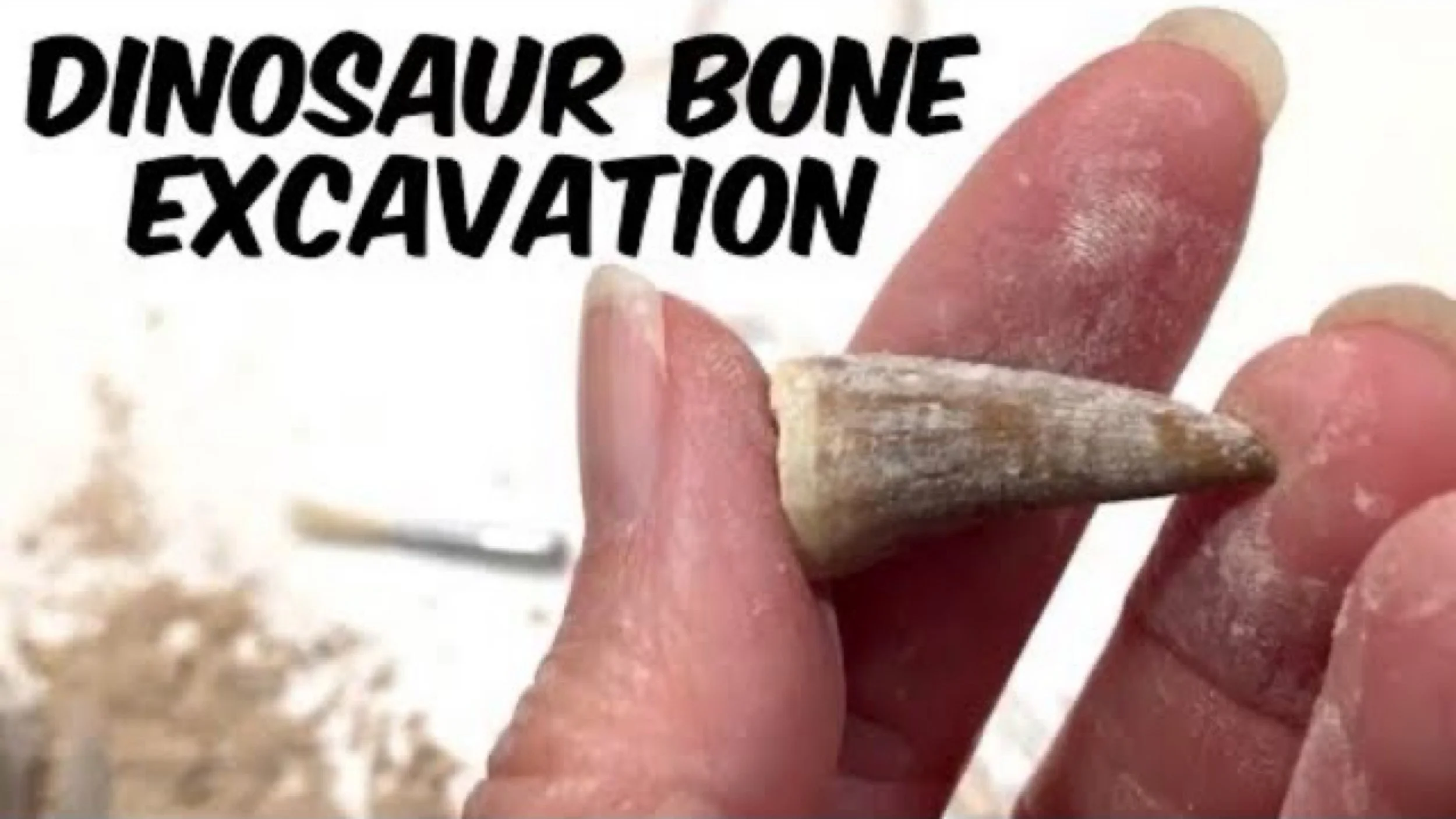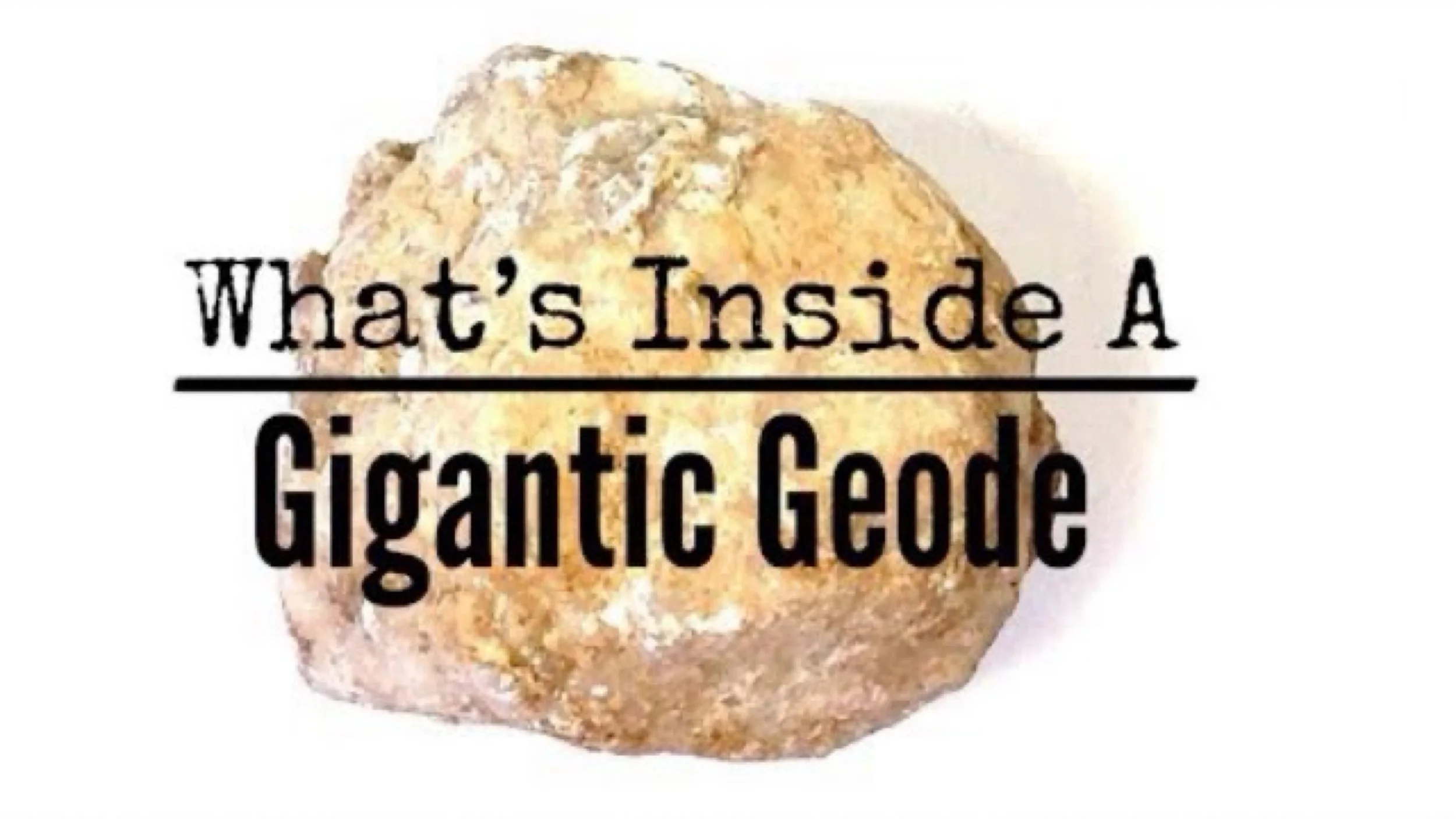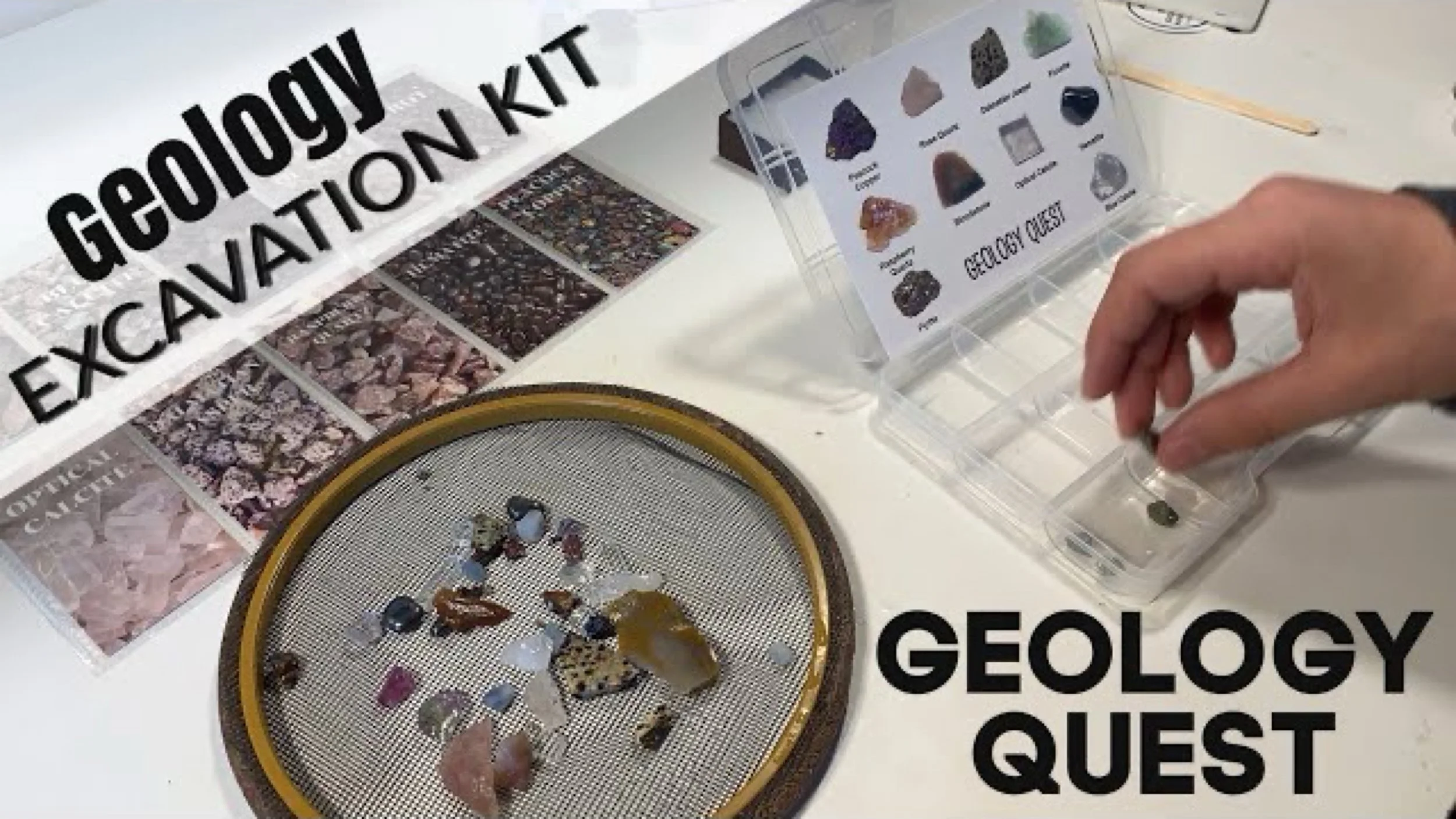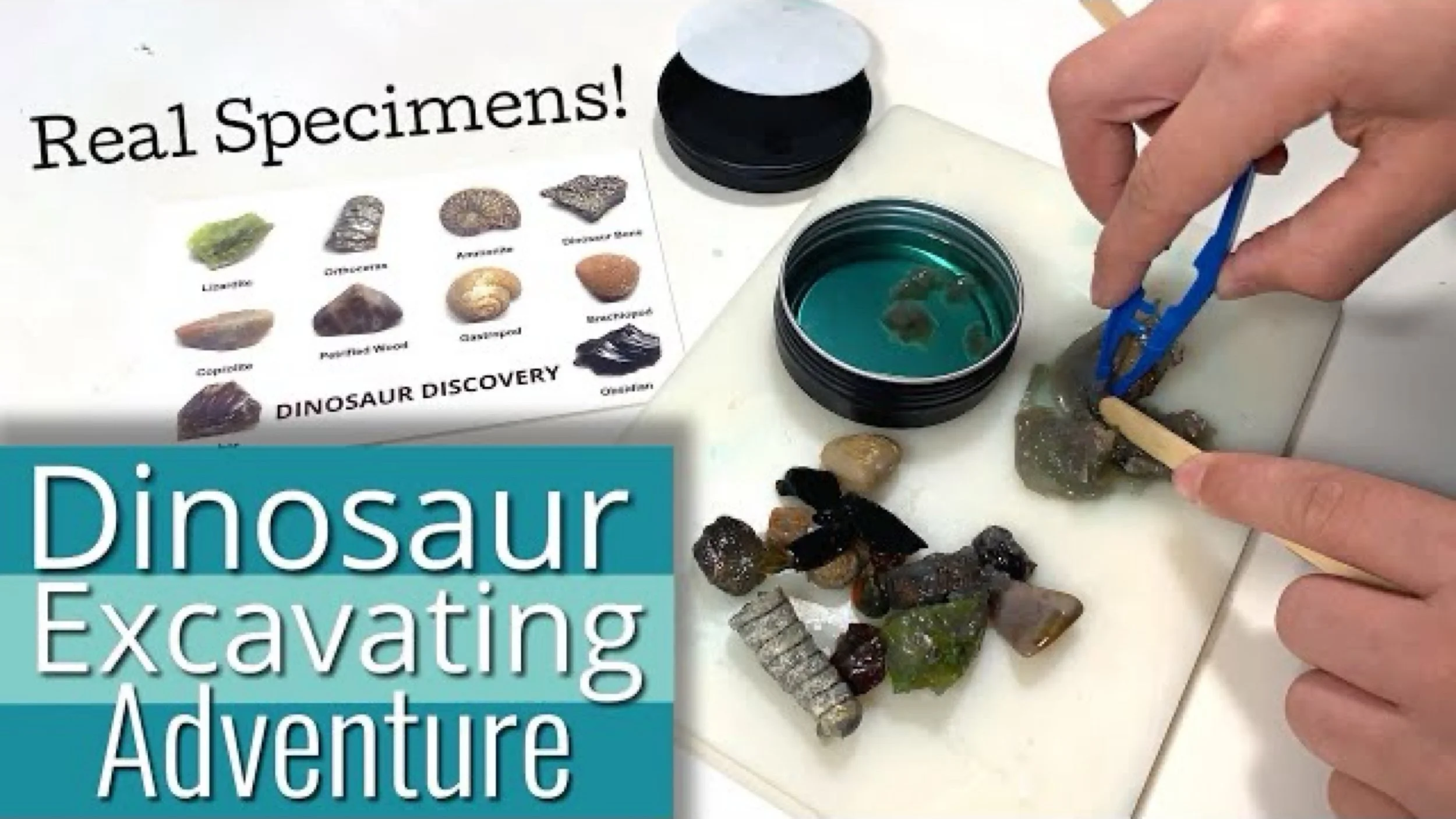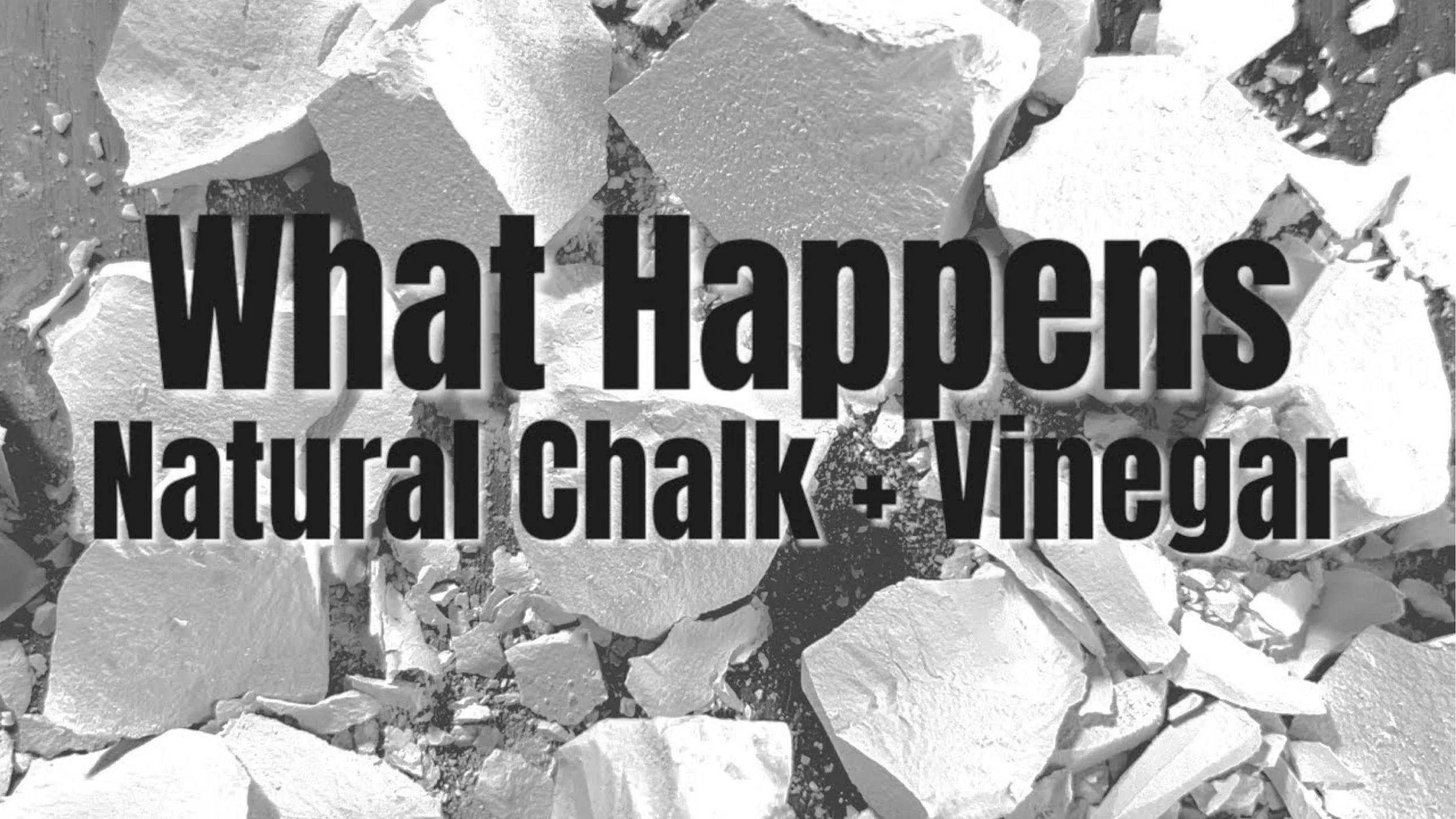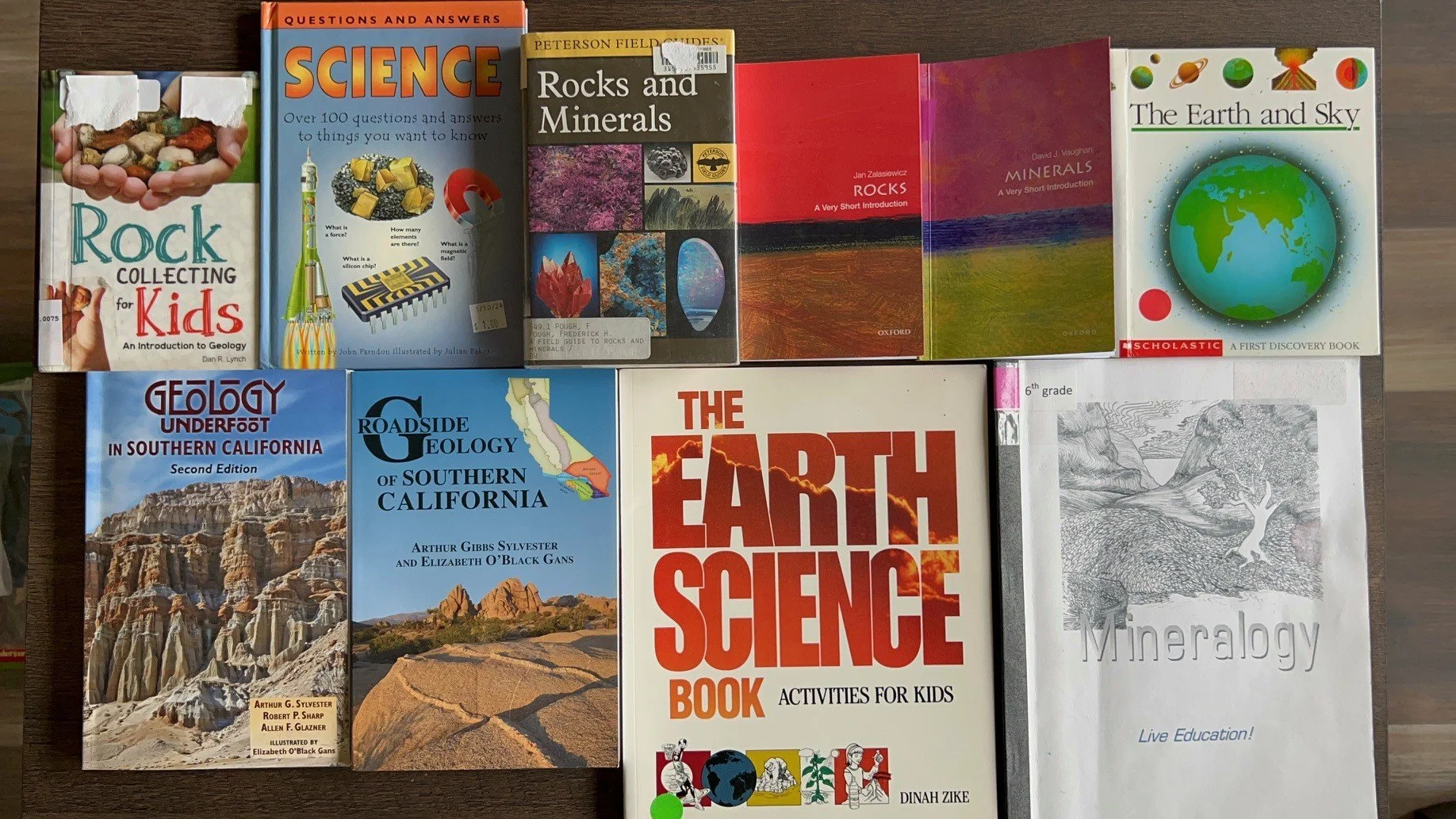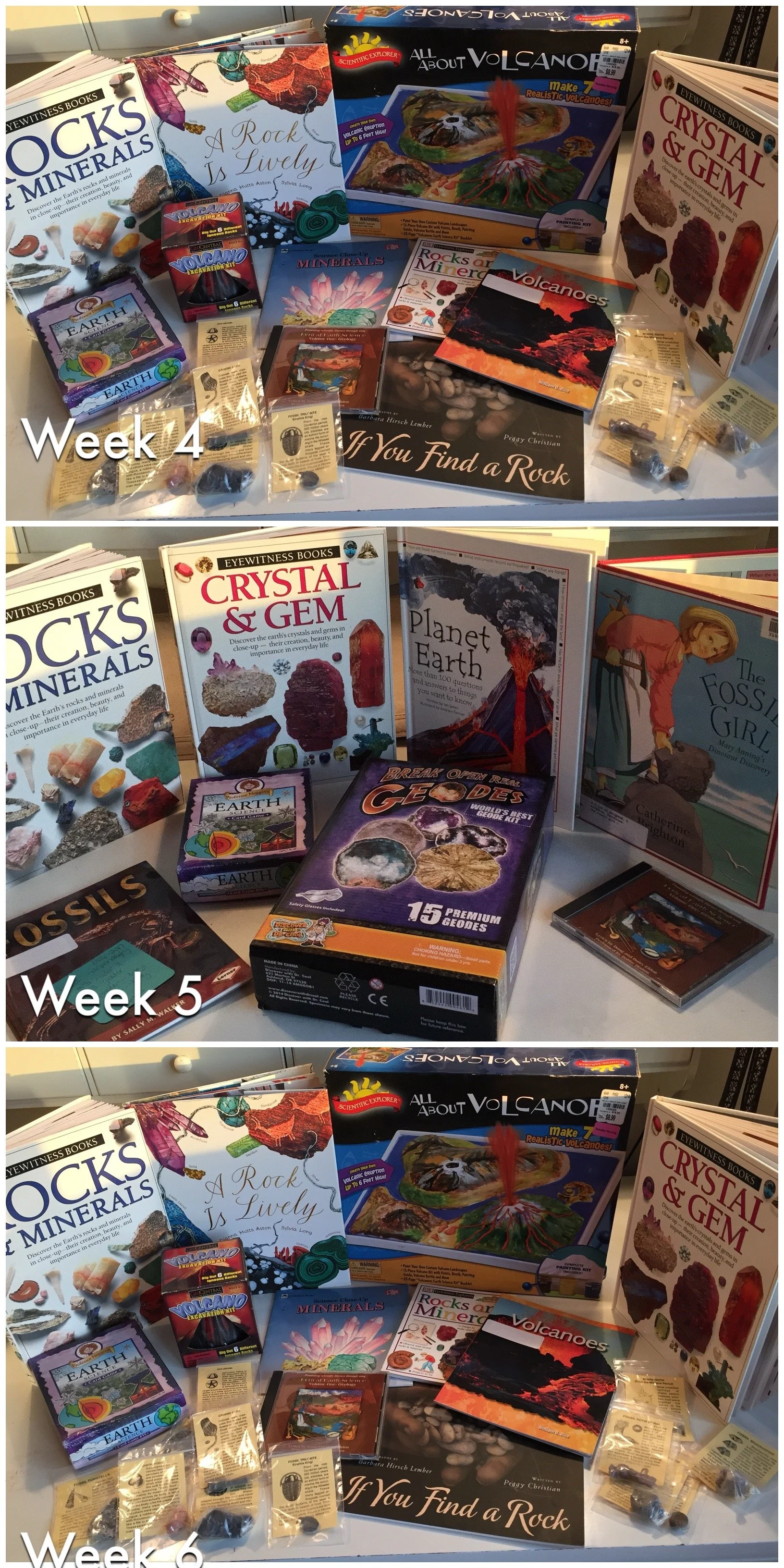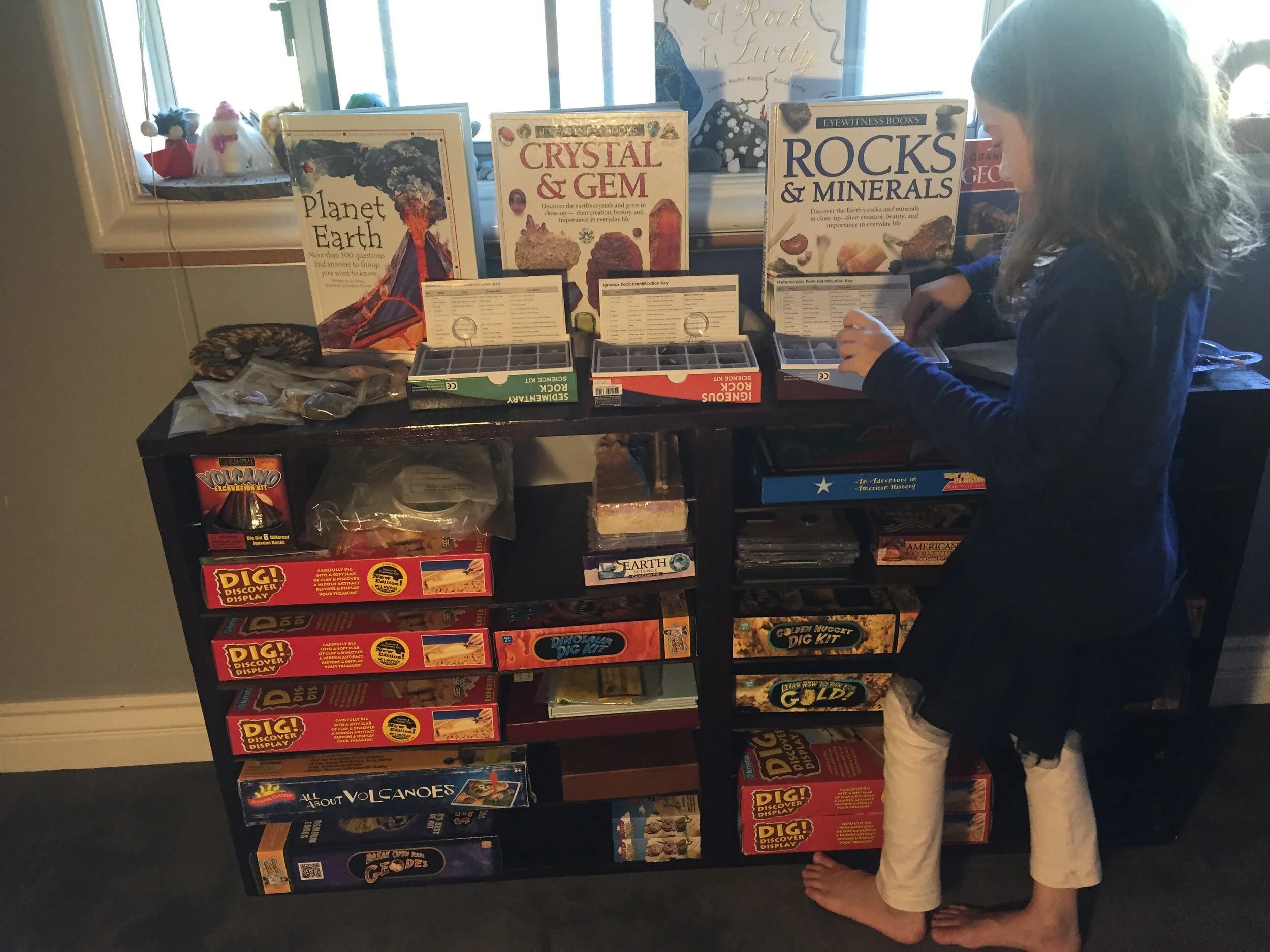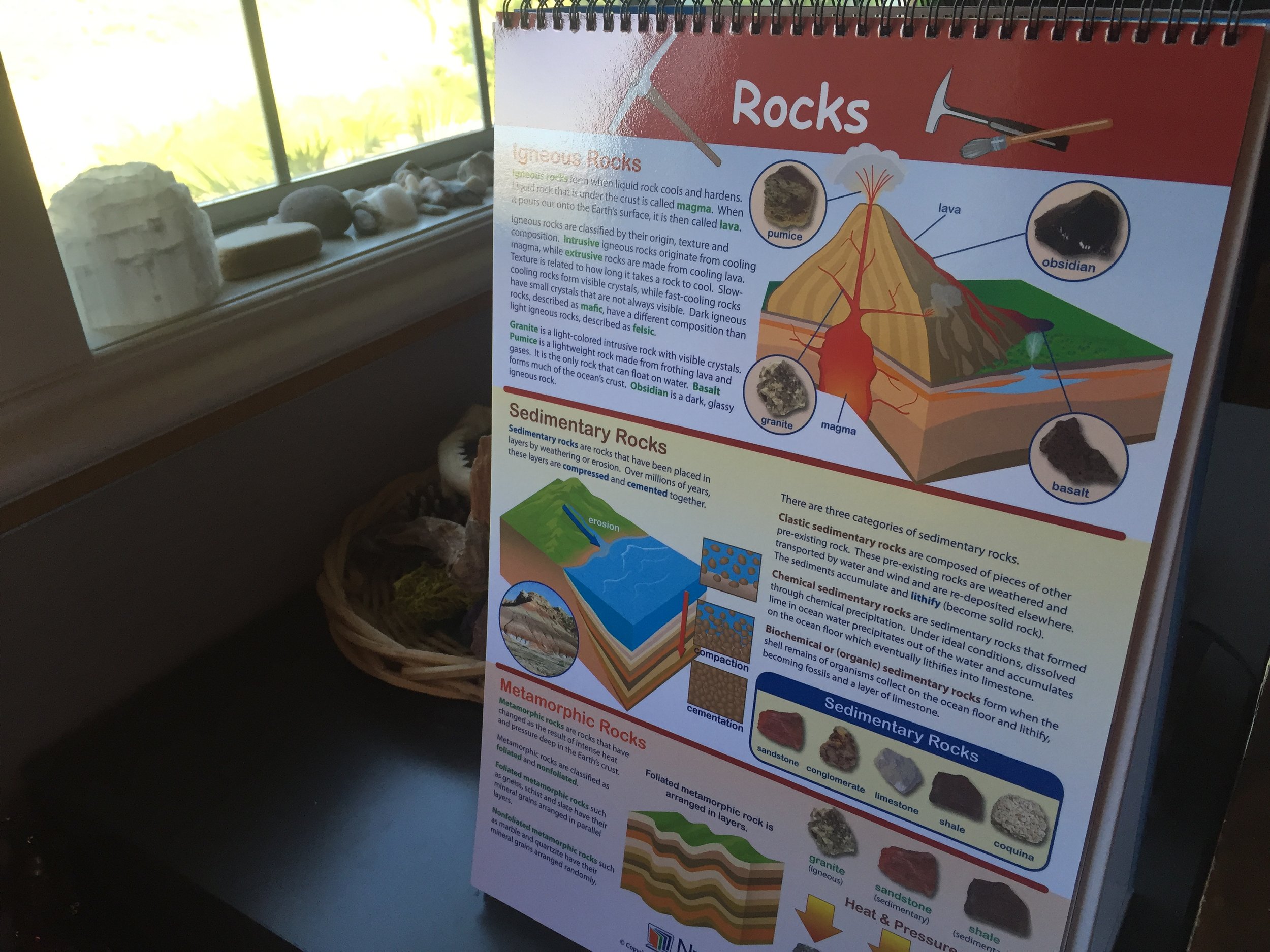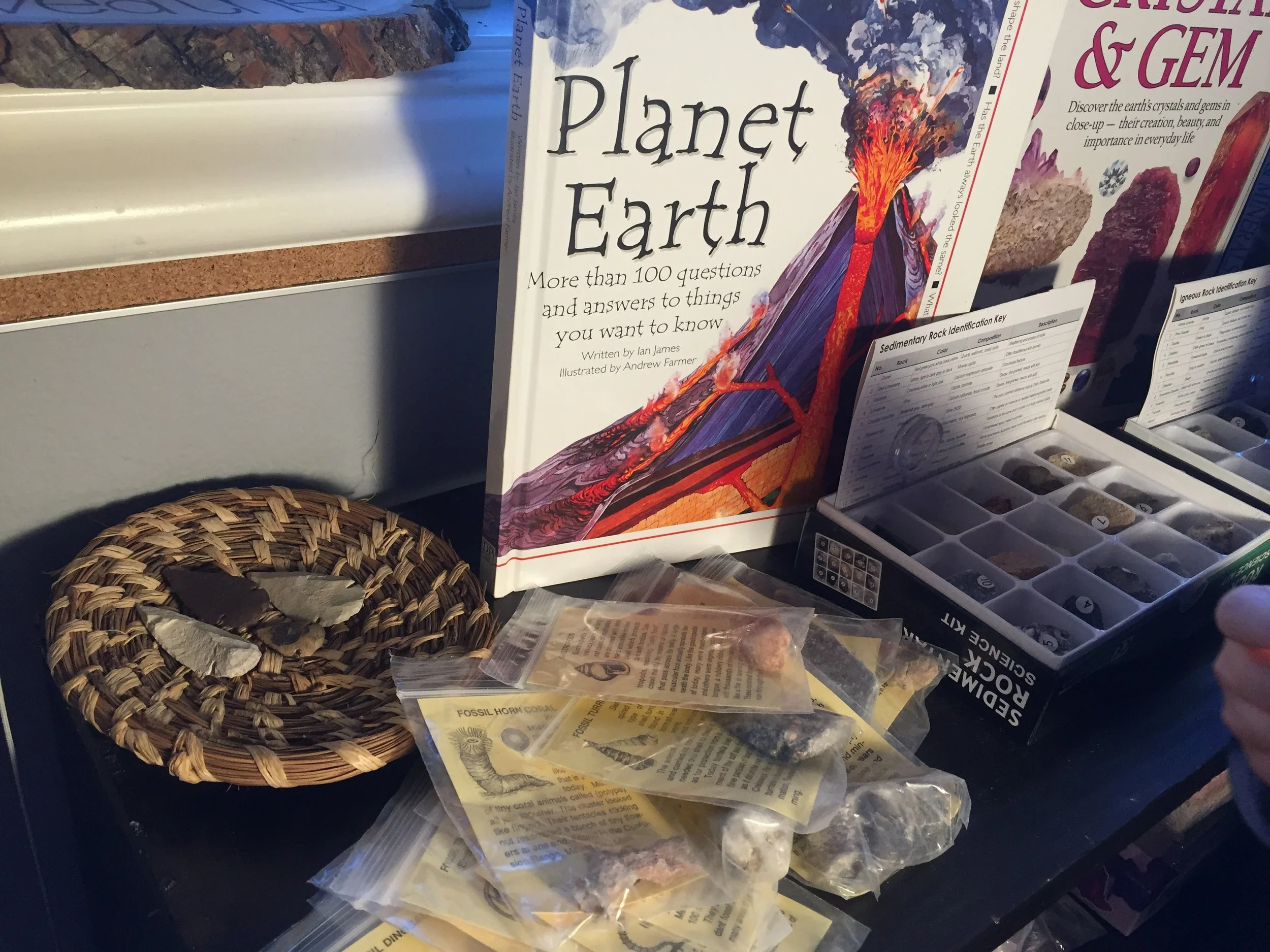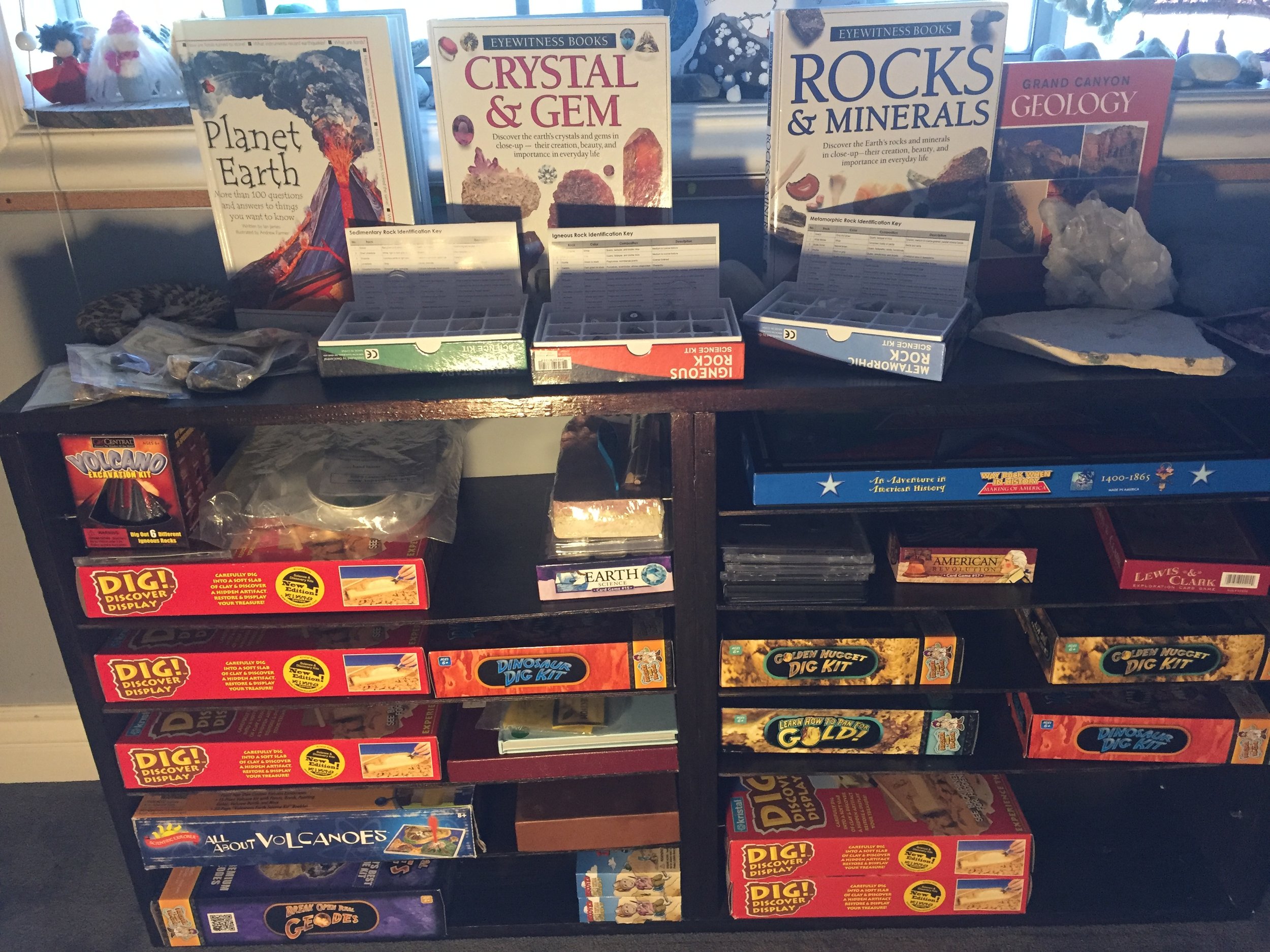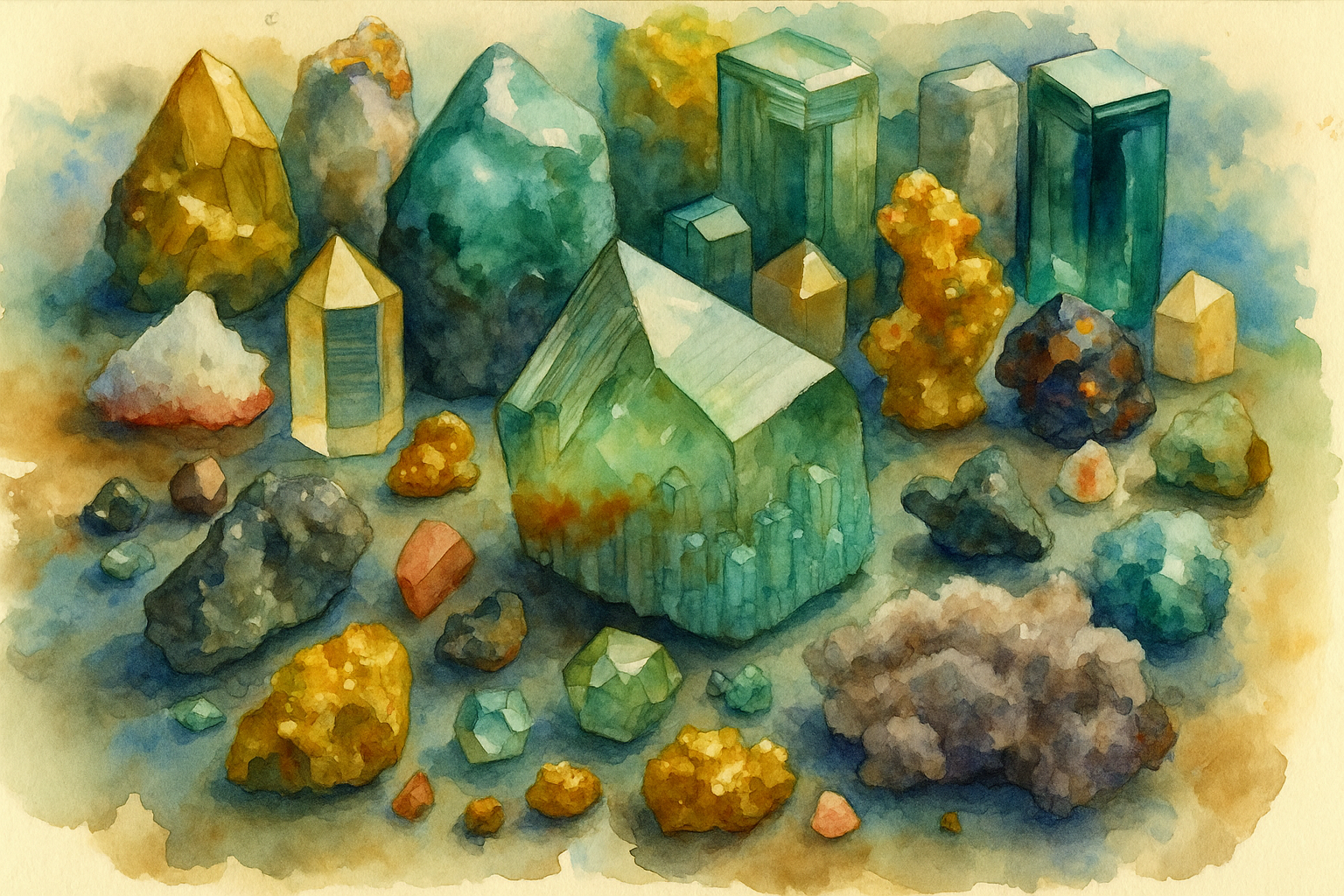
Mineralogy, Geology & Earth Science
Mineralogy, Geology & Earth Science
Why mineralogy, geology and earth science? Because mineralogy is our Waldorf Main Lesson block approach, Geology was our unit study and Earth Science was a broad look at the science teaching to multiple ages. This post will showcase all the times we did a study in earth science. I hope you’ll find the resources helpful. The complete resource list is in this post along with the video review of the resources we used for our Geology Unit.
When we did our Mineralogy main lesson block, we did it in the Waldorf methodology. This approach varies from a unit study in that a unit study may include other resources and lessons like including math or history and can be for any grade level and include any resource from books, lectures to videos and more. A unit study may take a week, weeks or longer. It may be for multiple ages at once. A main lesson block is a study of a subject area for a time period (usually 3 weeks or 2 blocks of 3 weeks each), and for a specific age group and supported by the Waldorf approach of beginning with the whole, then going to the parts and also supported by stories or content to help the student within her development.
The Mineralogy main lesson block begins its study first with local geological landscape and formations then quickly moves into the ‘whole’ granite, before going to the ‘parts’ the minerals that make up granite. It progresses in this way rather than beginning with the rock cycle and a description of each type of rock and how its made. Instead the two archetype of rocks: granite from fire and limestone from water, are discussed or at least mentioned or gently referred (at least this is how I did it).
Mineralogy, Geology & Earth Science
-

Resources & Chalk Drawings
When putting together a unit study or main lesson block, the first thing I do is collect resources. For our earth science units, the resources maybe for Young elementary, middle elementary or middle school, depending on whether it’s a unit study, a meteorology main lesson block, or geology. And since we have done this unit multiple times, I have multiple posts on the different resources we’ve used each time. In a Waldorf setting, mineralogy is introduced in grade 6, and geology is introduced in high school. There is a subtle yet significant difference between the two.
-

Lessons
In our years of sharing our homeschool journey, we’ve done our mineralogy block several times. Sometimes the content I share is ‘lesson’ heavy, and other times it’s ‘project’ or ‘activity’ heavy. When sharing the lessons, I share the main lesson book, the illustration and the narration, not the actually process of me delivering a lesson. On occasion, I share a ‘Real Time’ lesson, but what you’ll find here are main lesson book entries.
-

Projects & Activities
We Love our hands-on projects and activities. I truly believe that some of the best learning is hands-on learning. When my children were younger (elementary school) and especially for my boys (my daughter had less interest in our projects overall), we utilized kits, projects and activity books extensively in our education. Check out some of our projects! Sadly, many kits may no longer be available, but similar ones are sure to be.
Mineralogy, Geology and Earth Science Resources
-
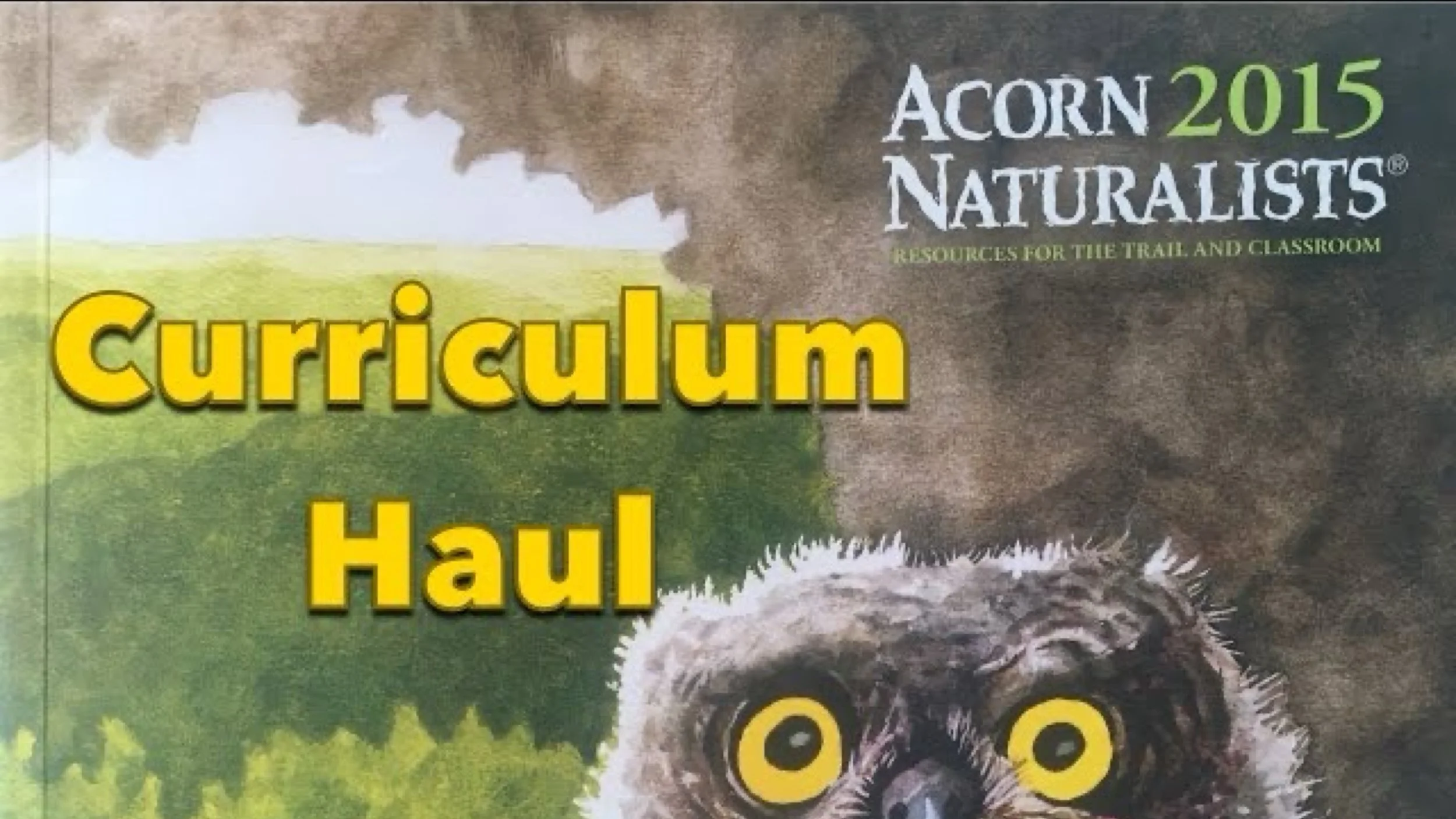
Acorn Naturalists | Homeschool Haul
It's time for a new unit! We save our science units for the spring, and to kick off this new unit, I have a curriculum haul to share with you from Acorn Naturalists. Acorn Naturalists is one of my favorite places to pick up curriculum for science. May 13, 2016
-
Mineralogy Main Lesson Block
I'm sharing some of our most recent Mineralogy resources we are using for our homeschooling lessons while using our Live Education Waldorf Main Lesson on Mineralogy. This main lesson block is intended to last about 3-4 weeks however, our blocks always last much longer. March 27, 2024
-
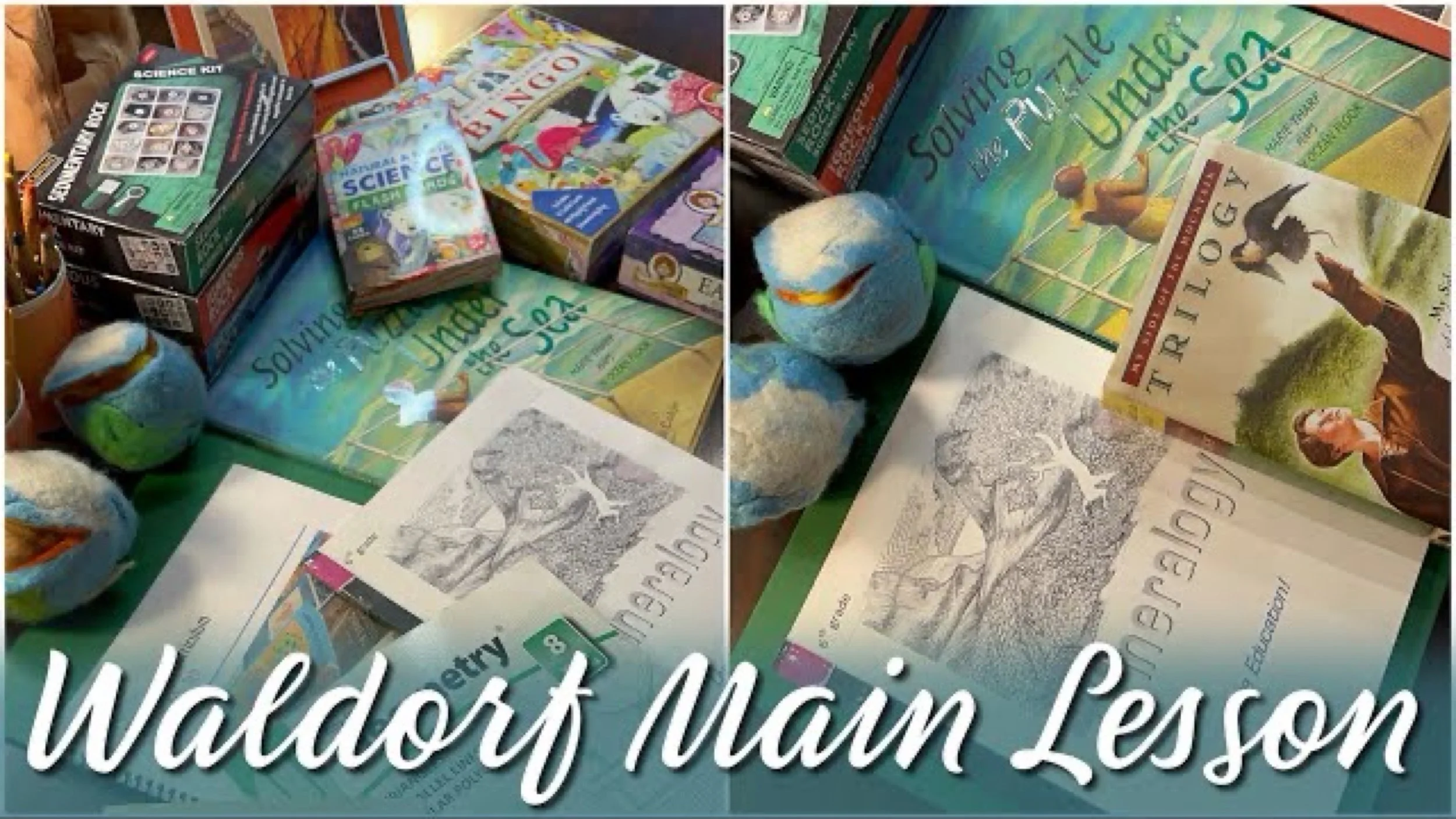
How Do You Put Together A Waldorf Main Lesson Block
What's a Waldorf Main Lesson? And how do you put it together? I share some tips with you on how I have traditionally put together our main lesson blocks. Before I share how I put them together, let's talk about the difference between between a unit study and a main lesson block. March 29, 2024
-

How To Do A Unit Study | Earth Science
We are doing a unit on geology, and I thought I'd share the process of putting together this unit. First I decide what we are going to study. I use the Waldorf curriculum from Live-Education as our default curriculum, so if I'm at a loss, I can always refer back to it as inspiration. You can choose a topic you are interested in, or you can expand on something in your current curriculum and turn it into a unit. August 29, 2016
-
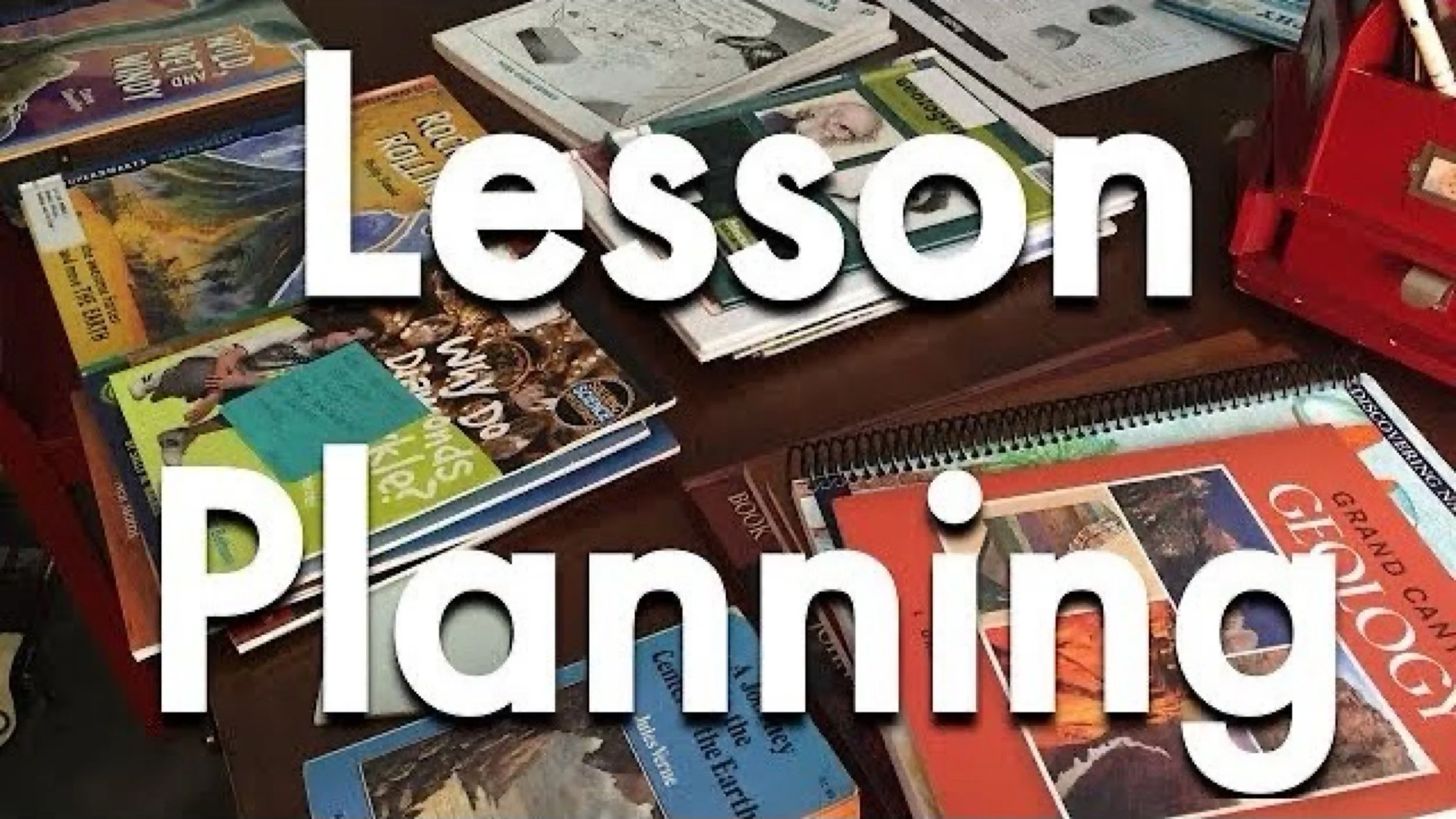
How to Lesson Plan for Homeschooling
This is the tail end of the planning process. It's when I've collected all my material and sorted through it. I've decided who is reading what, and which books I'll read aloud. All that's left to do is put it in my weekly lesson plans. This does take time up front, but it's worth it in the end. August 30, 2016
-
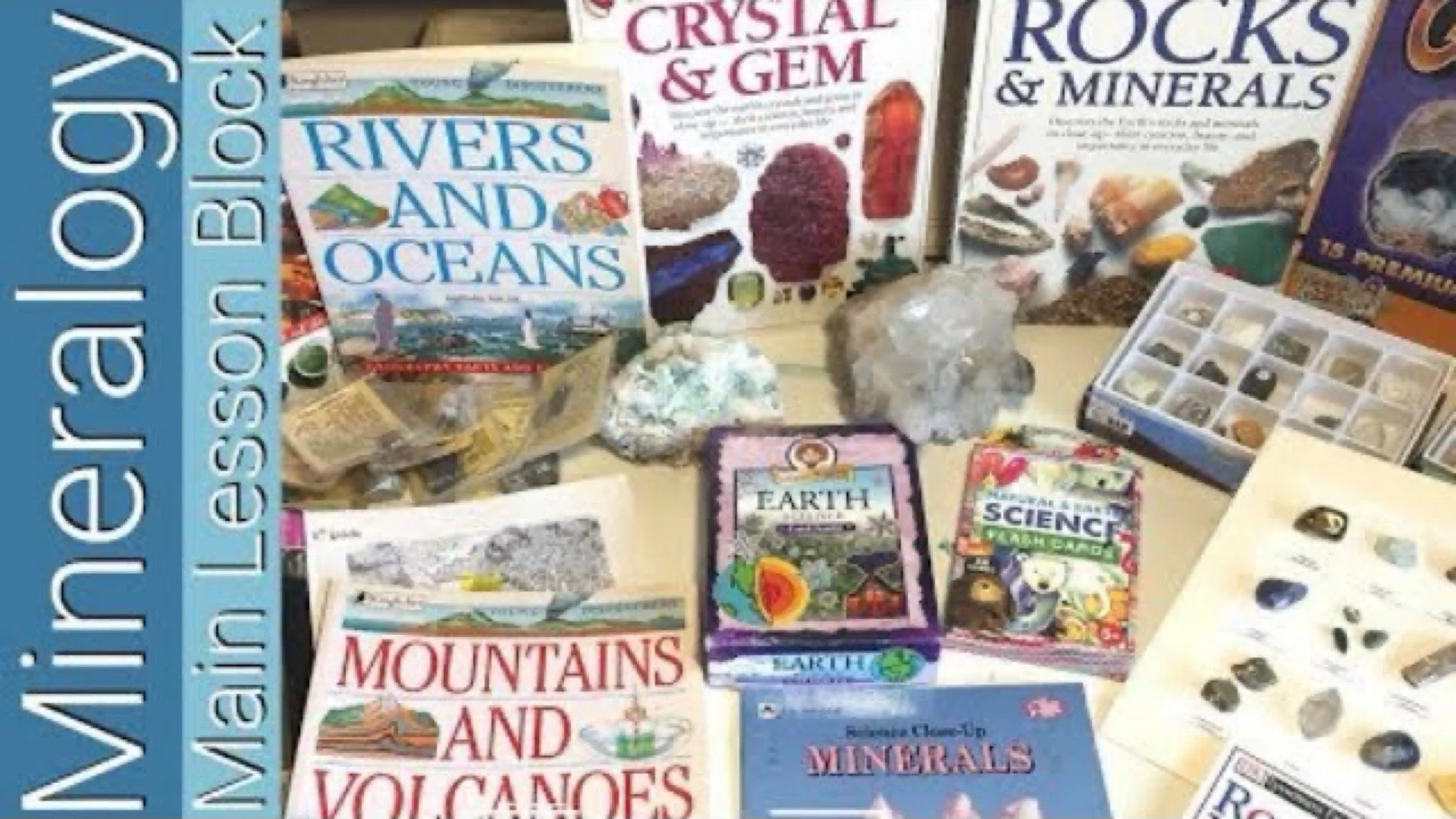
Mineralogy Main Lesson Block
New units are always filled with prospect and excitement. Collecting the material from the school room, library or elsewhere is definitely fun, but it can be overwhelming. I'm showing you the materials I'm using for our Mineralogy Main Lesson block. December 1, 2017
-

Visual Lesson Plans (Photos of our Resources)
For one of our Geology units, I collected all our resources (and then some) and lesson planned 6 weeks of lessons and projects. Check out the photos of that unit by swiping through the pics.
-

What’s the Difference Between Geology and Mineralogy?
Sharing some of my thoughts on the difference between geology and mineralogy. Please share your thoughts and opinions on the differences between geology and the Waldorf pedagogical approach to mineralogy.
-
Homeschool Earth Science Curriculum Review
When putting together our unit study for geology, I assembled a variety of books, kits and projects. While we loved most of the activities and kits, the books we chose weren't as successful. We read a lot. And most books were informative but not captivating. November 22, 2016
-
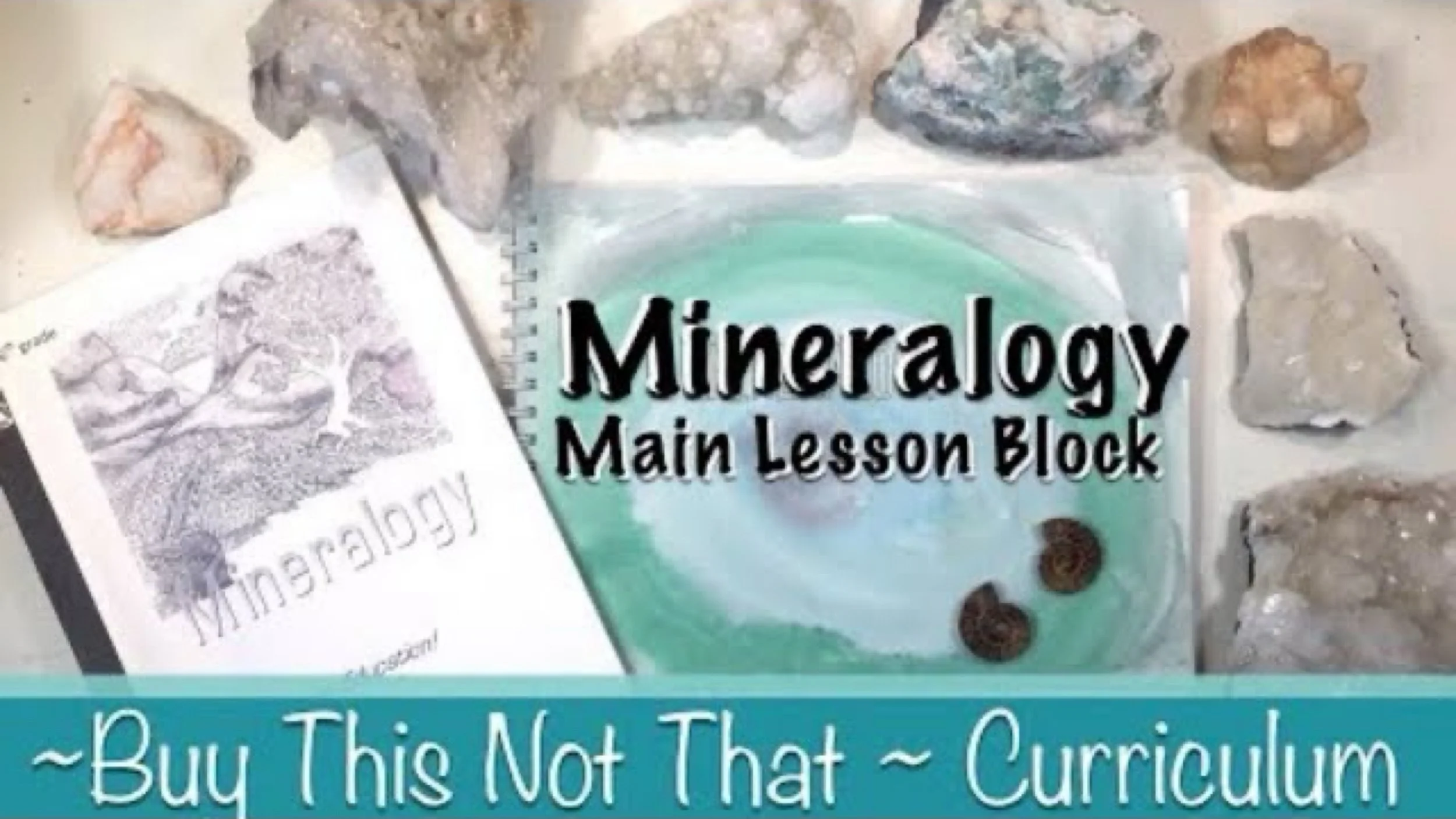
Mineralogy Curriculum Review
Ending a main lesson block or unit study is bittersweet. There's excitement to move on, but sometimes there's a longing to continue the unit just a bit longer. This time around, though we didn't finish all we wanted to do, we did accomplish a lot and thoroughly enjoyed the activities we did. February 5, 2018
-
Layers Of The Earth | Chalk Drawing | Geology Unit
Though we will put this in our geology main lesson book, this chalk drawing and the lesson that accompanies is not a Waldorf lesson nor does it appear in the Live-Education lesson block for Mineralogy.
-
Volcano | Chalk Drawing | Geology Unit
Chalk drawing are quintessential in Waldorf school. If you don't have a large chalkboard like mine, don't worry! You can get even better results using the ones from Waldorf Supplies.
Mineralogy Lessons
-
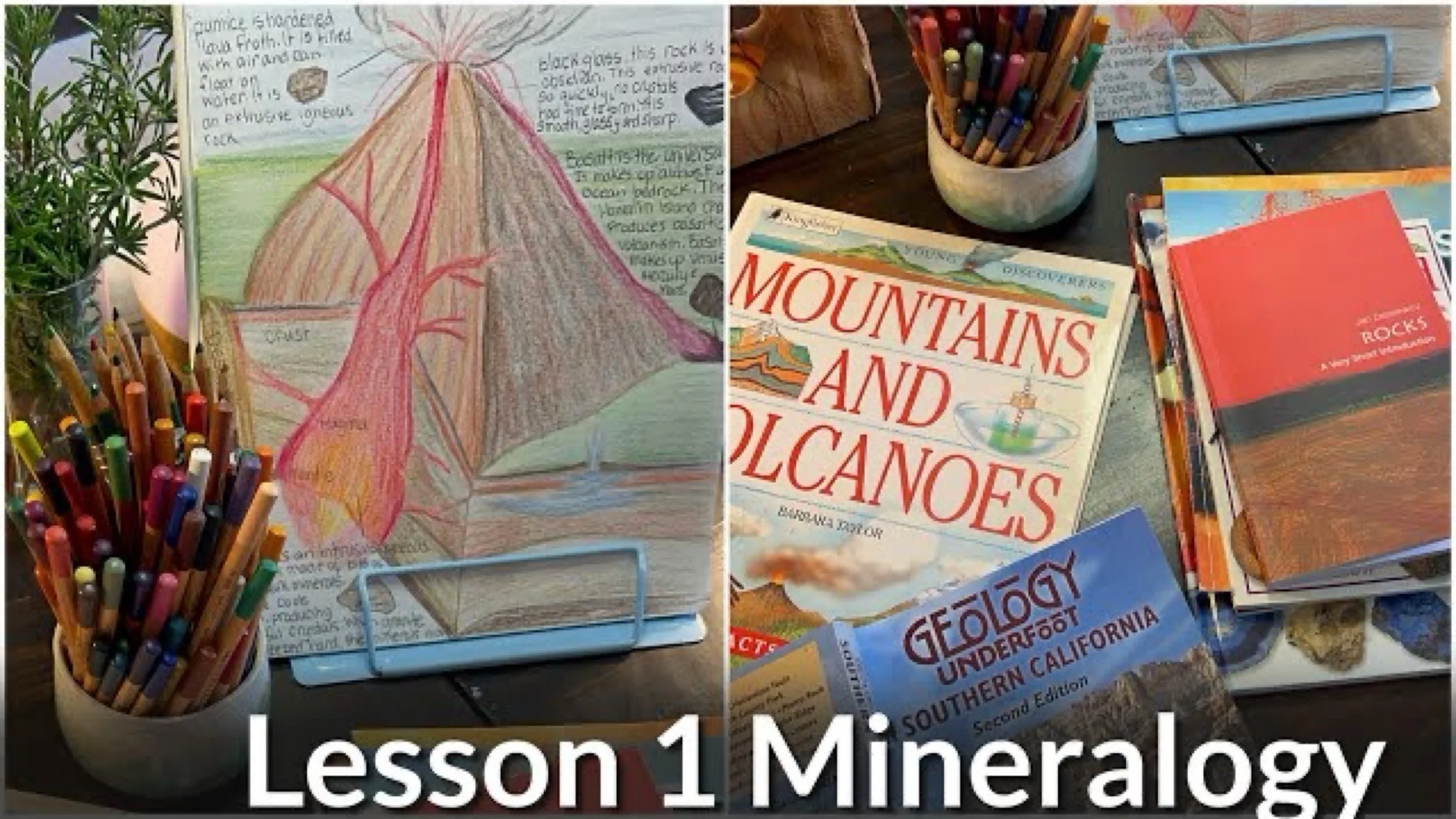
Waldorf Mineralogy Lesson
The Mineralogy main lesson block begins its study first with local geological landscape and formations then quickly moves into the 'whole' granite, before going to the 'parts' the minerals that make up granite. It progresses in this way rather than beginning with the rock cycle and a description of each type of rock and how its made.
-
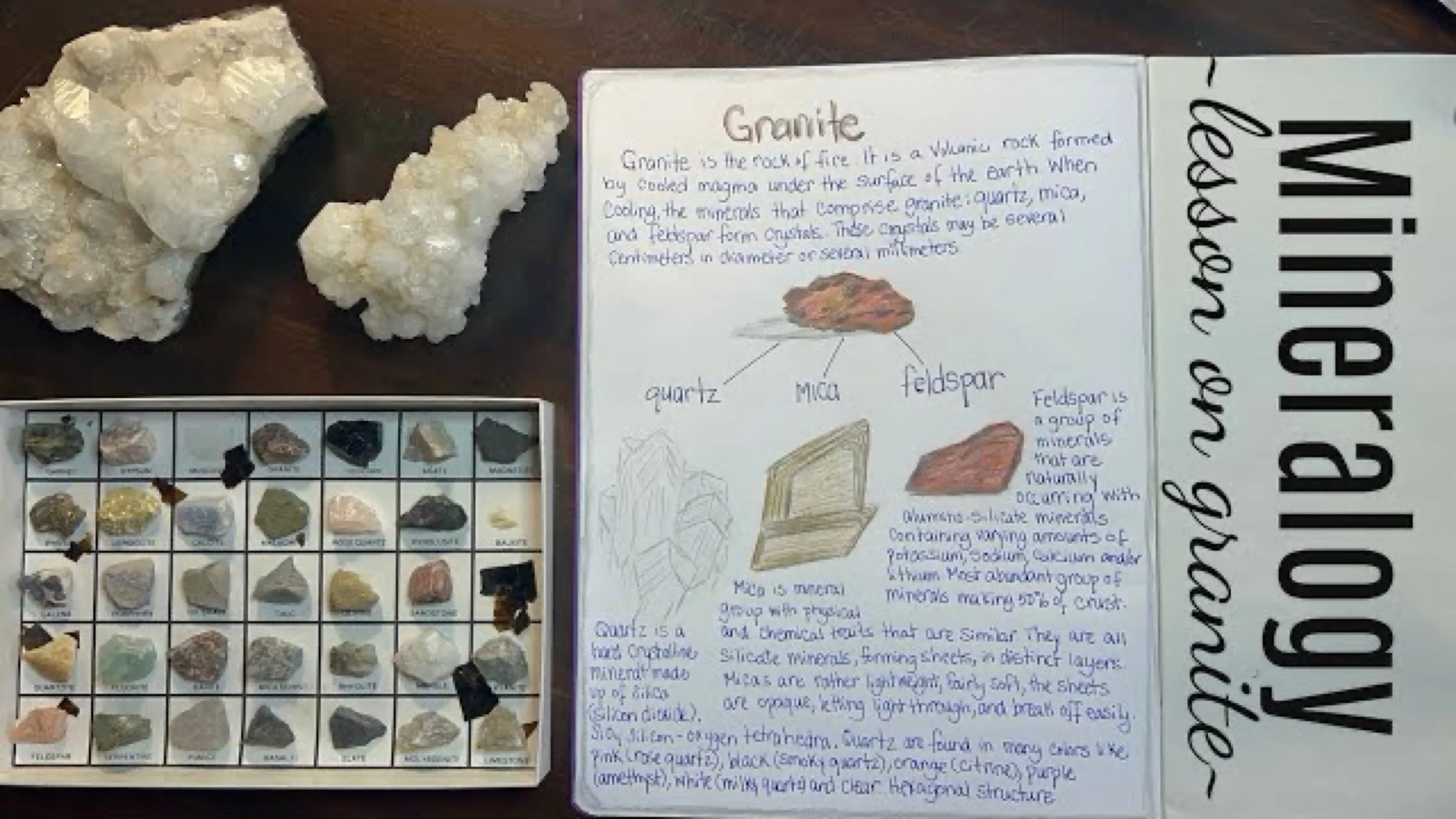
Mineralogy Main Lesson | Granite
This is lesson 2 of our latest Mineralogy Main Lesson Block, and while most of it is in line with the Waldorf methodology, I'm realizing some of the things I want to include, like the structure of minerals and the elements and the formation of elements and minerals, are not relevant to the lesson and are not developmental appropriate for the grade 6 student.
-

Geology Lesson | The Roots of the Mountain
Did you know that mountains have roots? Much like an iceberg where you only see the tip above the water, and the majority of the iceberg is below water, so to are mountains, where just the tip is visible on the the surface of the planet, while the remainder of the mountain goes deep below the surface.
-
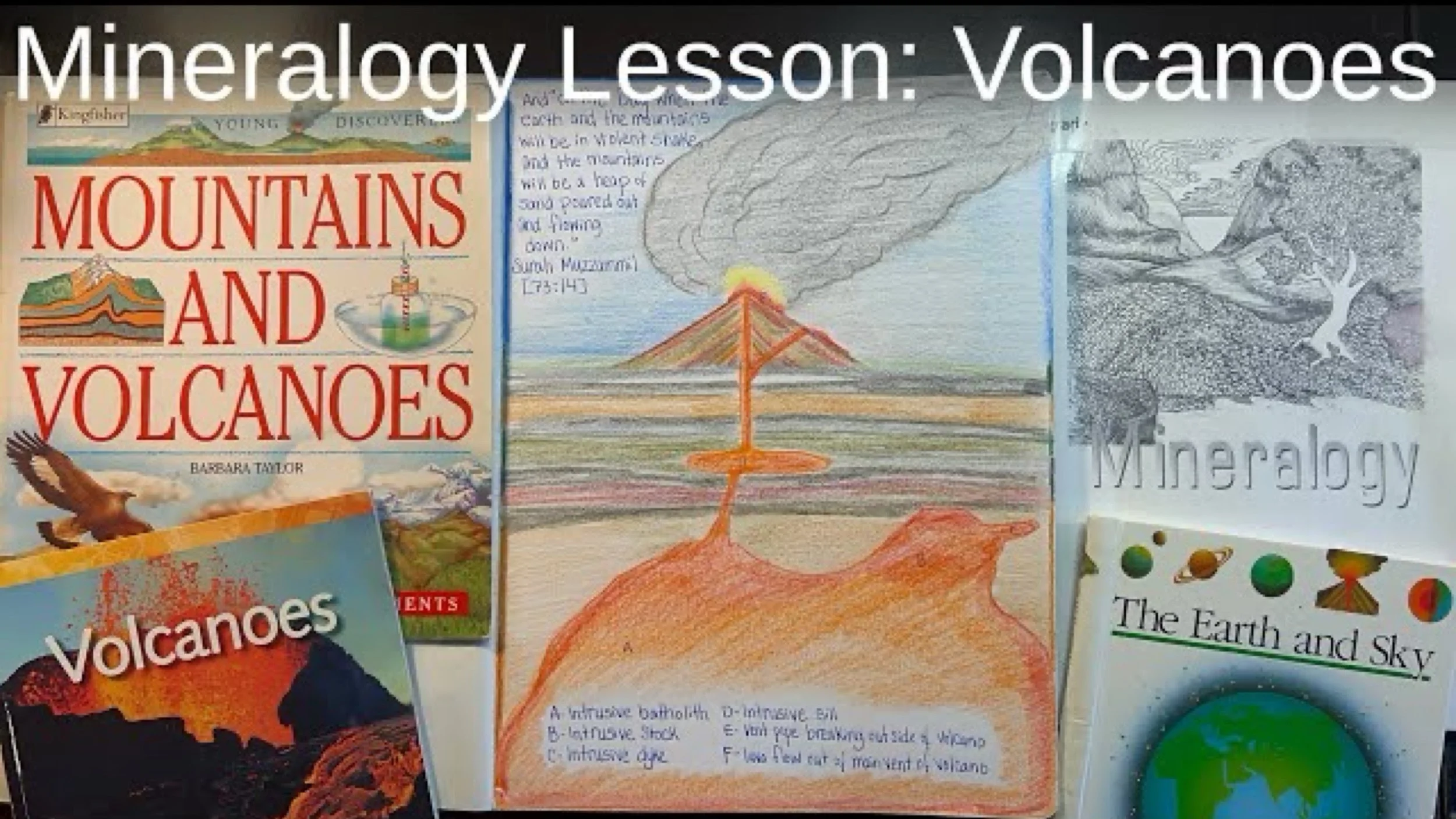
Mineralogy Lesson cross-section of the Volcano 
In this Mineralogy Lesson we learn about volcanoes and the tremendous amount of magma below the surface of a volcanic mountain. I am using our Lyra color pencils for this lesson. We completed the lesson over 2-3 days, reading completed on the first day, the drawing next, later we read specifics about the types of rocks and magma related to this illustration and finally we wrote narrations in our main lesson books.
-
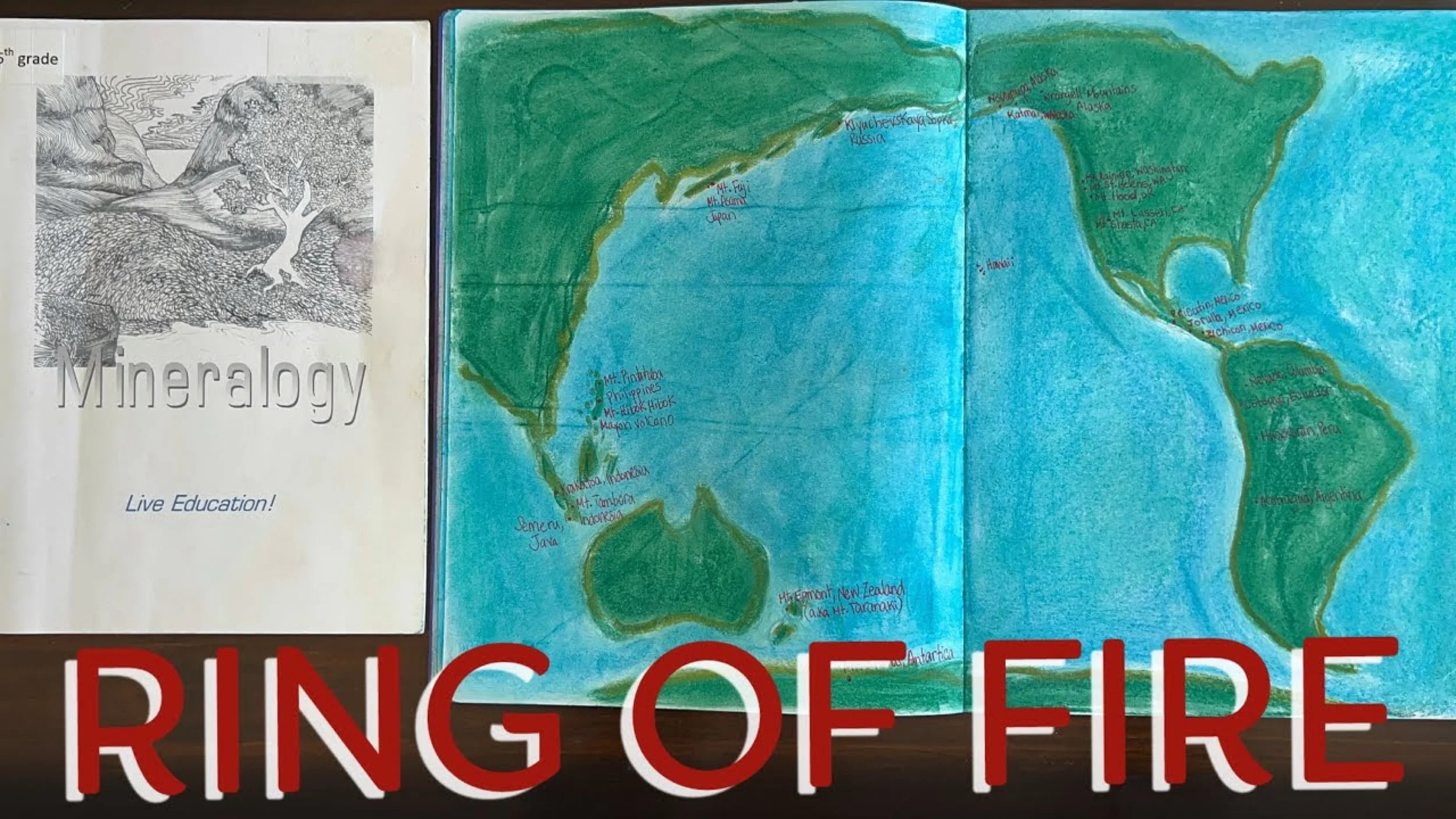
Ring of Fire
For our Waldorf mineralogy main lesson block, we continue with our lessons on land formation, plate tectonics and volcanic activity. Today's lesson is about the Ring of Fire. We used chalk to cover our double page layout in blue.
-
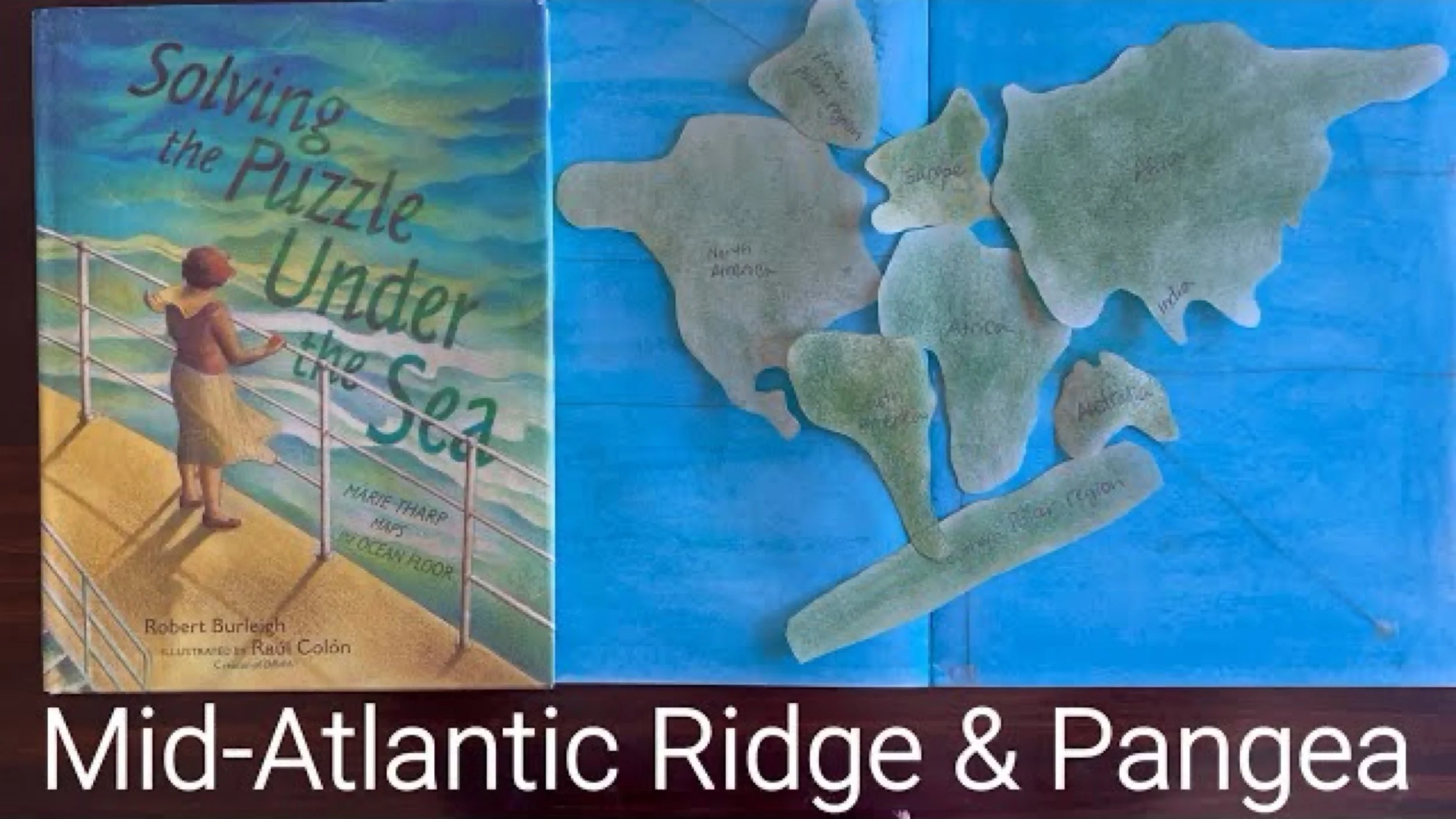
Mid-Atlantic Ridge & Pangea
For our Waldorf mineralogy main lesson block, we continue with our lessons on land formation, plate tectonics and volcanic activity. While we have done the landforms for Pangea in the past, we are approaching this lesson a bit differently. We began by tracing the continents from an atlas. You could print off the continents on printer paper and cut them out alternatively.
-
How Mountains are Formed from Magma
In this mineralogy lesson, we studied volcanoes. When magma cools below the surface of the earth, it forms gigantic granite ranges. Tectonic activity, and across geological time, these granite ranges rise the surface of the Earth and through erosion and weathering the layers that covered these granite ranges you rode overtime, exposing these gigantic granite mountains.
-
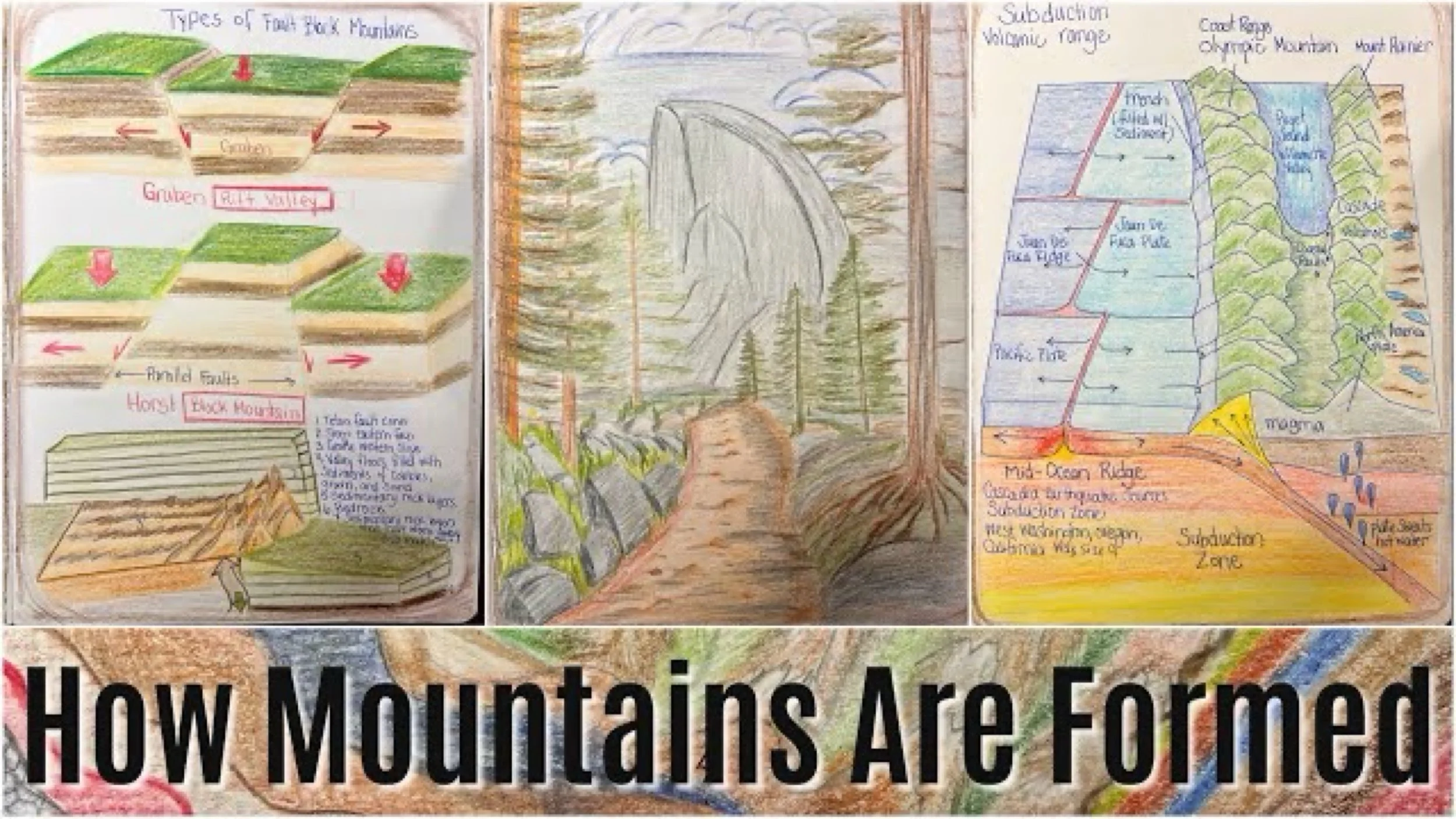
How Mountains Are Formed
This lesson on 'How Mountains are Formed' is a four part lesson in which we learned about Fold Mountains, Dome Mountains, Volcanoes and Fault Block Mountains.
-
Iron Ore Veins from Sedimentary & Igneous Rocks
We continue with our main lesson block in Mineralogy with a two part lesson on the formation of iron ore veins in banded iron formations and iron oxide deposits in both sedimentary and igneous rocks.
-
Banded Iron Formations from Sedimentary Rock
In this Mineralogy lesson, we depart from the main lesson book by Live Education to focus on two lessons where we dive into how iron ore deposits formed in precambrian oceans.
-
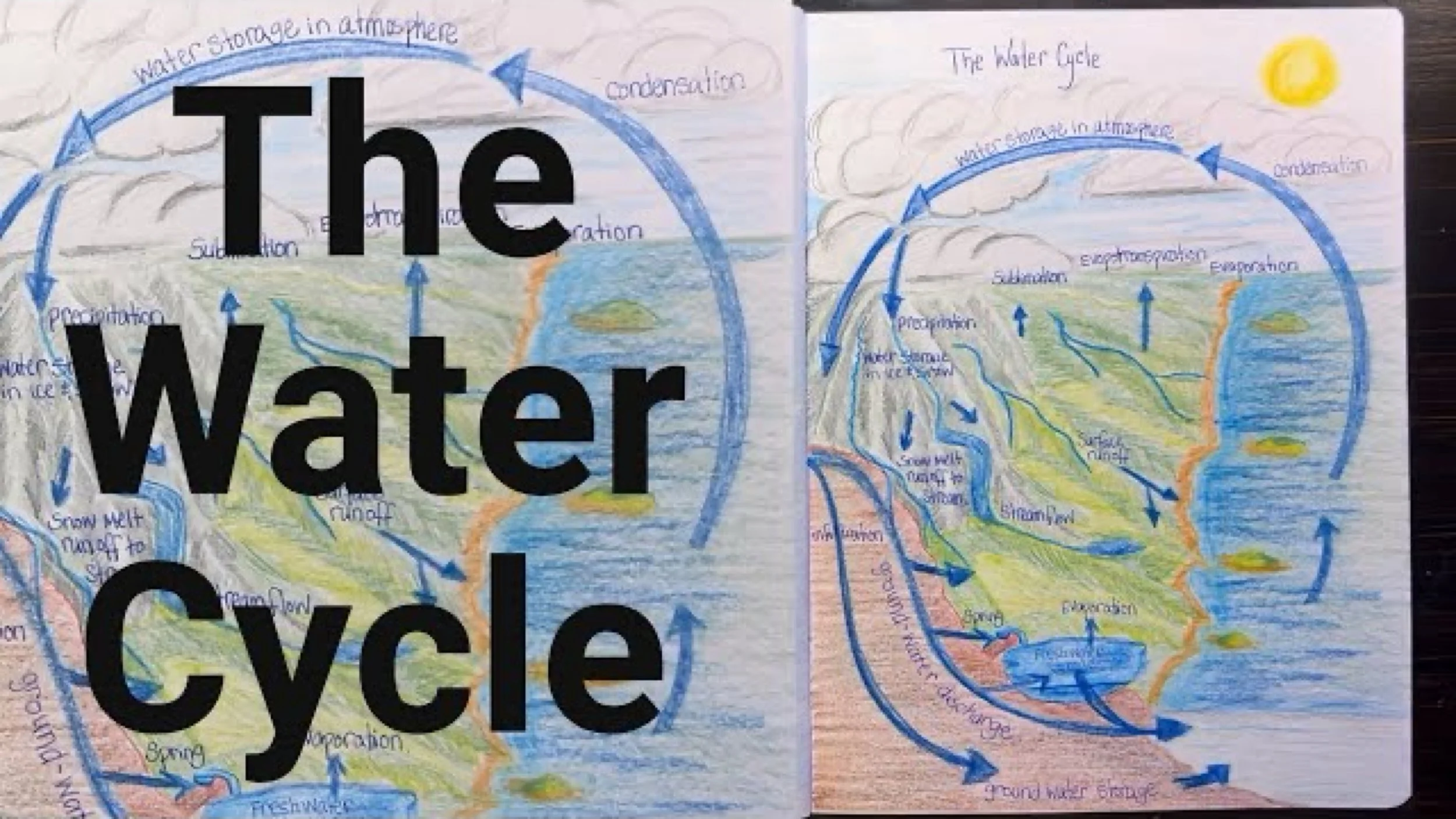
Water Cycle | Earth Science
While this lesson was not in the curriculum, I chose to add it here because of its relevance with the previous lesson on the limestone cycle. Originally I intended for this lesson to be part of the limestone cycle, but it ended up being its own lesson, though I didn't have any additional written content for it.
-
Limestone Cycle | Mineralogy
The limestone cycle starts in the ocean hundreds of millions of years ago when tiny creatures with calcium rich shells or bodies died and littered the ocean floor with increasing sediment. From the immense weight of the water above, the pressure compacted these layers and cemented them over time.
-
Grand Canyon Geology
This lesson on sedimentary rocks explores the Grand Canyon in Arizona. This geological formation is rich in beauty and geological history giving us an insight on how this land looked hundreds of millions of years ago.
-
Types of Fault Lines | Geology
Fault lines are lines of weakness in a plate and that instability results in plates shifting which can create brilliant mountain ranges. Fault lines can cause earthquakes which cause destruction to land and structures.
-
The Formation of Coal & the Carboniferous Period
The formation of coal occurred during a 60 million window during a period known as the Carboniferous period. During the Mississippian and Pennsylvanian periods of the Paleozoic Era, 299 to 359 million years ago, the planet was was warm, moist and had oxygen levels of 35%. Compared to the 21% of today, the Paleozoic Era boast oversized arthropods with dragonflies the size of birds and other insects measuring 10 feet long and weighing as much as 100 pounds.
-
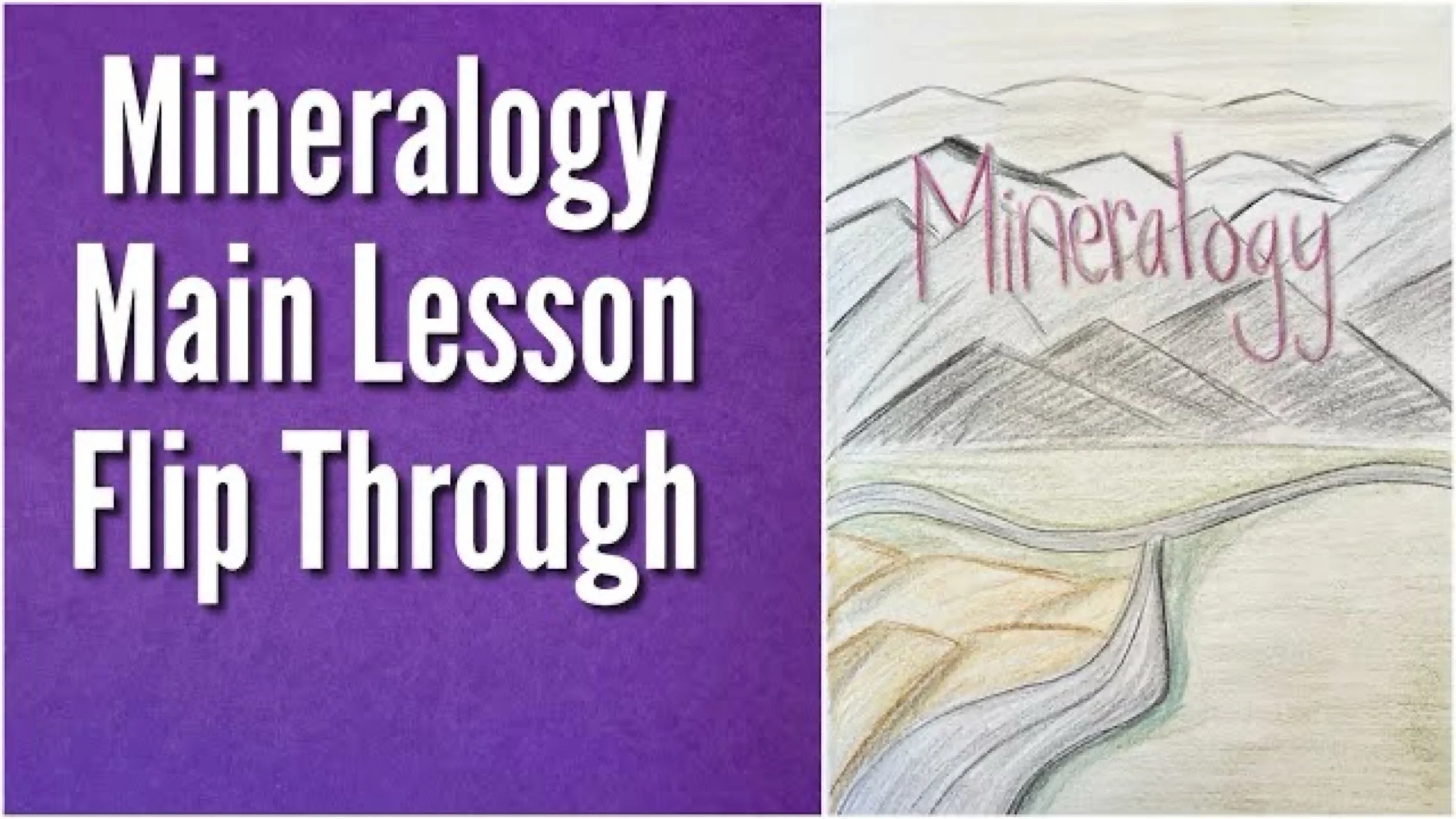
Waldorf Mineralogy Main Lesson Book
This is the first time we followed our Live Education Waldorf curriculum for mineralogy to completion. We haven’t done this in the past, in part because I found the curriculum too challenging to wrap my head around or felt there wasn’t relatable content to present.
-
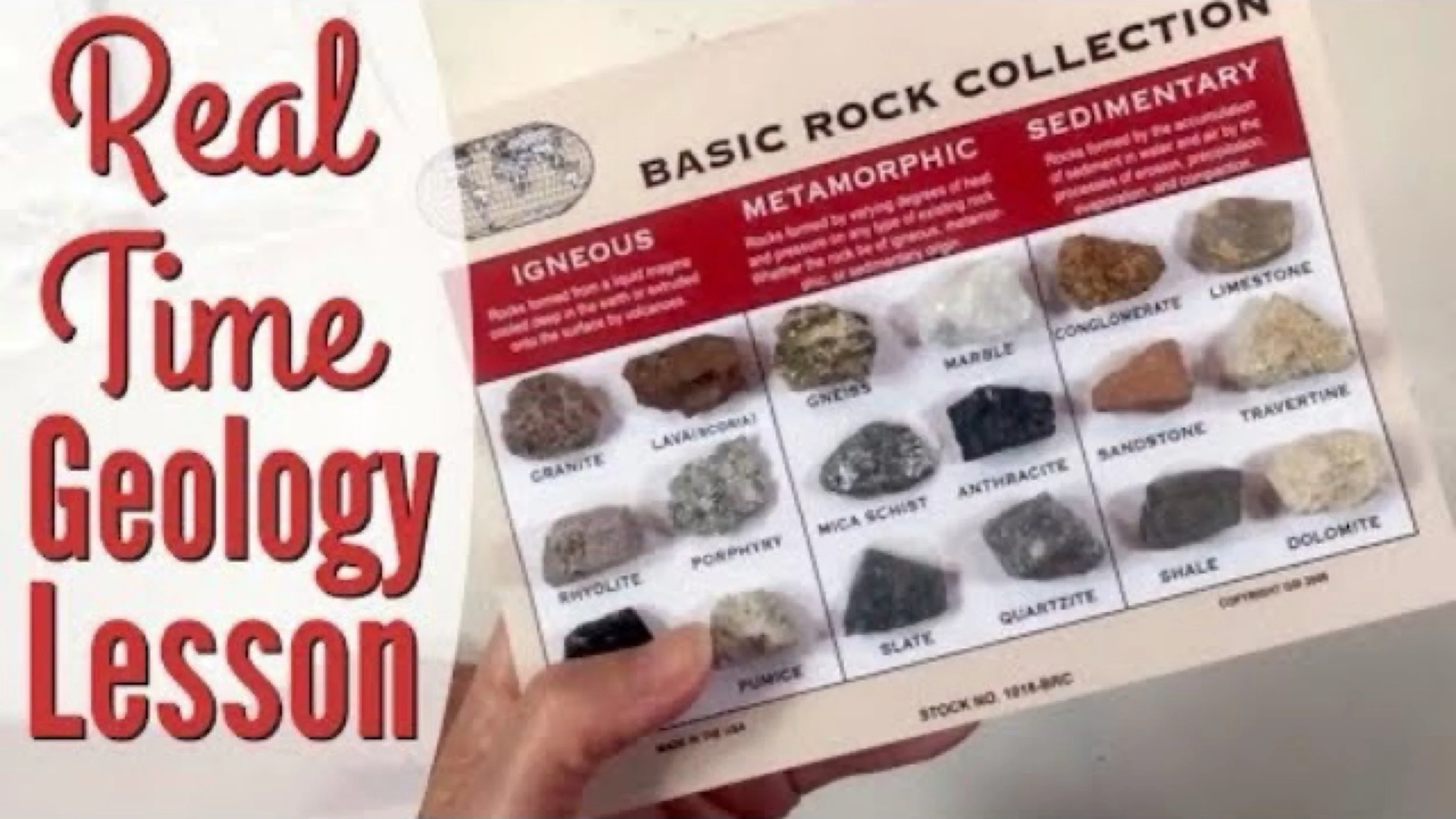
Real Time Homeschool Lesson | Mineralogy Main Lesson Block
Here's the only real time homeschool lesson for our Mineralogy unit. We're using the Rock-O-Rama classroom kit from Nature-Watch. This kit was packed with materials! We worked on these projects on three occasions over several weeks.
Geology Projects & Activities
-
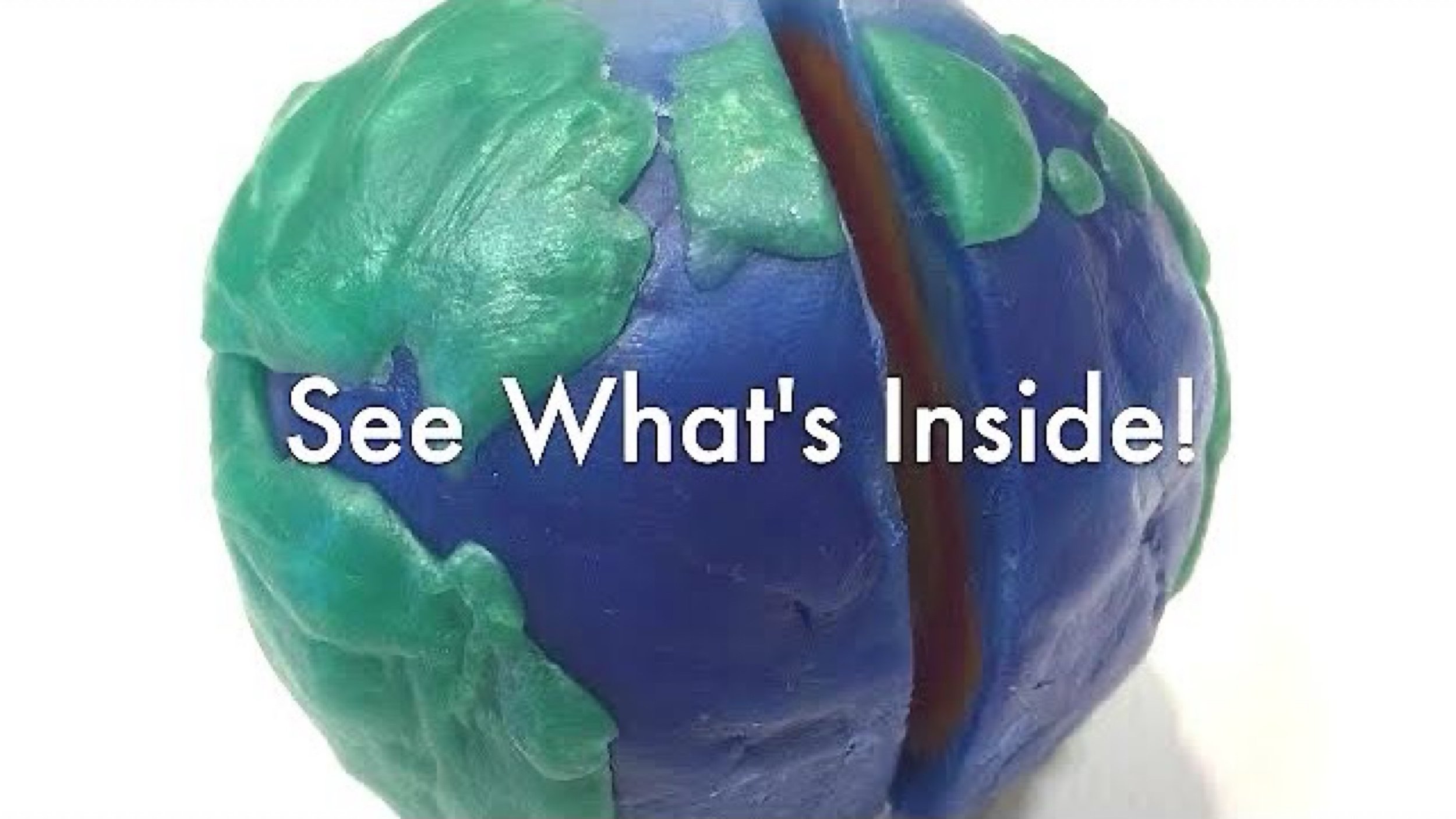
Layers Of The Earth | Geology Unit
We are working on our geology unit and finding inspiration for projects from Barbara Taylor's book Mountains and Volcanoes. We began by warming the wax in our hands; it was easy because the weather is warm. We rounded up a yellow ball to represent the inner core then wrapped the orange ‘outer core’ around it.
-
DIY Mountain Project | Geology Unit
This is a super easy, super affordable and very educational activity. We were inspired by the book Mountains and Volcanoes by Barbara Taylor, but took the project one step further by gluing the layers of paper together to make it a permanent 'fold mountain'. We also did the activity using very thin modeling beeswax by Stockmar from A Child's Dream.
-
How To Make Pangaea | Geology Unit
I'm going to show you two ways to demonstrate how the continents once belong to one supercontinent Pangaea.
-
Growing Crystals
Our latest Dig! Discover and Display kit is not just for excavating crystals and rocks, it's for growing crystals, too! Each kit comes with two packets of mono-ammonium phosphate. Some packets of salt are dyed with food coloring to mimic crystals found in nature; however, each crystal structure is the same, forming tetragonal crystals.
-
Mixing Vinegar & Chalk | Geology Unit
We got the inspiration for this project from the book called Mountains and Volcanoes by Barbara Taylor. However, we didn't have naturally occurring chalk to perform the demonstration properly, so we improvised and used baking powder and baking soda as an alternative.
-
How to Make a Geyser | Earth Science
Geology is one of my favorite sciences. We are using the book Mountains and Volcanoes by Barbara Taylor as inspiration and today we are going to make a geyser.
-
Simple Geology Activity | The Mantle and Magma
For our geology unit, we are using the book Mountains and Volcanoes by Barbara Taylor as inspiration for projects, activities and experiments. This simple low-cost/no-cost project was fast, thrilling, informative and easy.
-
Crystal Excavation | Mining for Crystals
I was surprised at how nice these rocks and crystals were. They are beautiful, polished and from around the world. You also get a lot of specimens! Fifteen in total. This kit was great for kids 5-13 years of age, however, the crystal growing part of this kit needs adult supervision and you can see that in a separate video.
-
What's Inside Geodes?
This has been our funnest project this year. We loved it! This kit perfectly accompanies a geology or earth science unit. We picked up Break Open Real Geodes from Rainbow Resource.
-
Geology Lapbook | Tutorial
For our geology unit, this lapbook is the culmination of most of our work. My 5th grader still wrote daily narrations, but no information stuck as well as what he learned and relearned to make this lapbook. Though it took far longer than I expected, it turned our far better than I hoped.
-
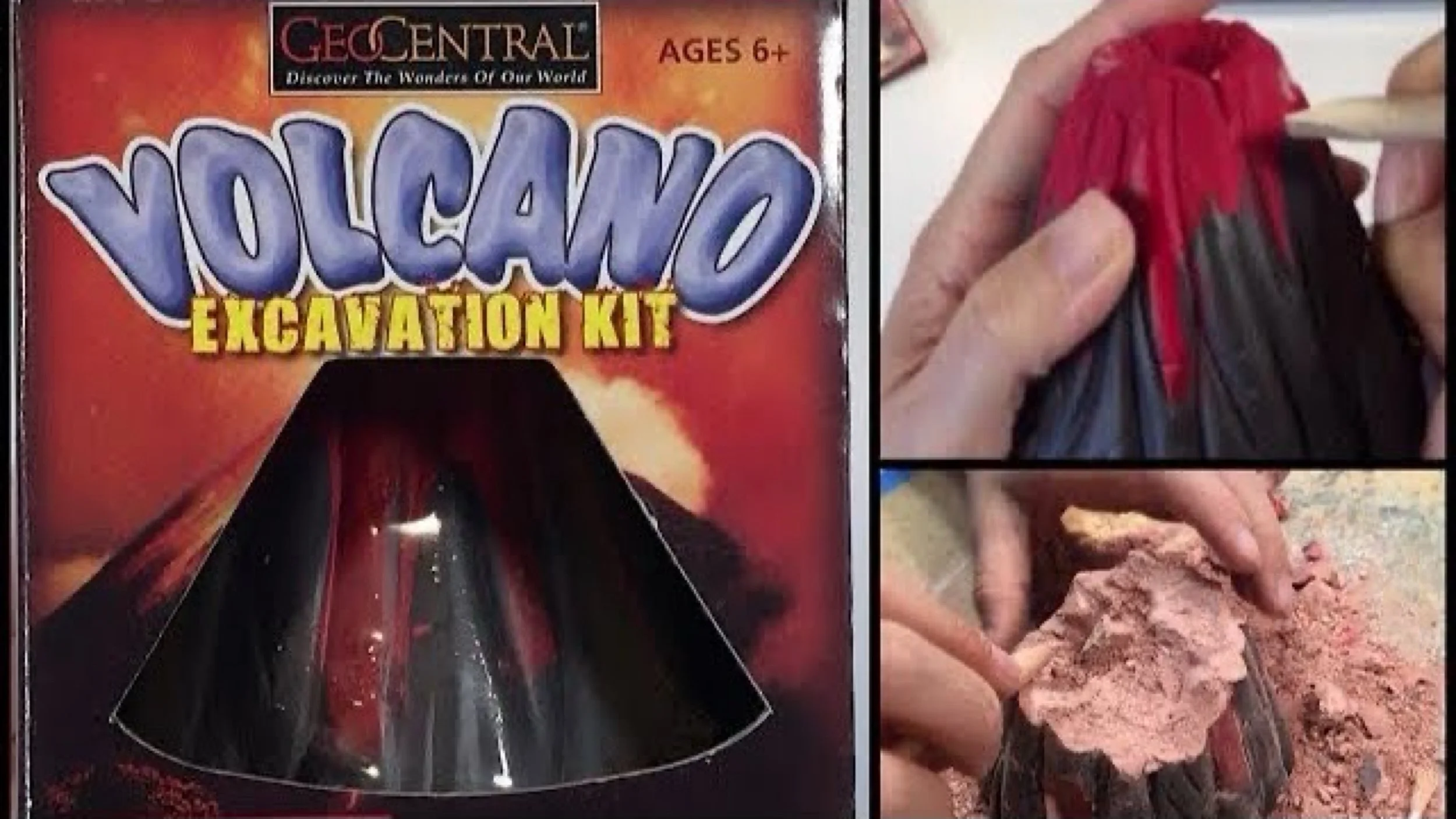
Volcano Excavation Kit | Geology Unit
For our geology unit, we excavated igneous rocks from a ‘volcano’ excavation kit. There were six rock specimens to find from a possible 12 samples. Once my 5th grader excavated the rocks, we decided to make a display for them as a way to showcase the rocks and to keep them from getting lost.
-
DIY Archaeology Kit | How to Make an Excavation Block
DIY excavation kits are super easy! All you need is some Plaster of Paris, a mold and some treasures to hide. We’ve been using these store bought kits in our homeschool for several years now, and I’m thrilled to be finally making them ourselves.
-
Volcano Kit | Earth Science
I admit that I have not done too many volcano projects with my kids over the years. In part it’s because I have reservations doing a chemistry experiment as part of a geology unit. Volcanic eruptions are nothing like the reaction between an acid and base, but I do confess, they are spectacular to do and oh so much fun.
-
What’s Inside the Layers of the Earth | Felted Earth Project
I’m sure you haven’t seen the earth quite like this before. Curious to see how our layered model of the earth turned out? This is one interactive model that’s sure to delight and educate. We wet felted a model of the earth using wool, then cut it open to fill it with the mantle and core.
-
How Magma Moves in the Mantle
Here’s a really simple geology demo on thermodynamics and magma we did for our mineralogy unit using the book Mountains and Volcanoes by Barbara Taylor. You can probably do this project with materials you have around the house.
-
Excavating Dinosaur Bones
oin us as we excavate real dinosaur bone, an aquatic lizard tooth and coprolite (dinosaur dung). This Dinosaur Dig Kit by Discover with Dr. Cool was fantastic! I highly recommend it. You get three high quality fossil specimens, two activity guides, a display case and excavation tools.
-
How to Make Sedimentary Rock and Excavation
Curious how sedimentary rock is formed? This is a quick and educational project that’s easy to do and fun to excavate. You do need a few materials to do this activity.
-
What’s Inside A Gigantic Geode
After cracking open 15 premium geodes last year for our geology unit, we decided to try this gigantic premium geode also from Discover with Dr. Cool. To be honest, the gigantic geode was no less thrilling than the 15 small ones.
-
Excavating Rocks | Geology
We love our hands on projects and this time we are trying out a new company and their innovative kits. Recently, Excavating Adventures reached out to me to see if I would like to try their products.
-
Gemstone Excavation Kit
We recently got four excavation kits from Excavating Adventures and I have to say, I’m blown away at how awesome these kits are. Aside from the huge amount of specimens you get in each kit, you also get to excavate in unique materials for each kit.
-
Discovering Dinosaur Fossils
The Dinosaur Excavation kit from Excavating Adventures is one of the most creative kits we used. Each month (if you are doing the monthly subscription kit), you get a different kit to excavate and explore.
-
What’s Inside Amber?
Curious to see what’s inside prehistoric amber? Check out what we found in our sample! This is genuine Colombian amber millions of years old.
-
What Happens When You Add Vinegar to Natural Chalk
What happens when you add an acid like vinegar to natural chalk? We tried this demonstration back in 2016 with chalkboard chalk and were disappointed because chalkboard chalk is not made from naturally occurring chalk, and this project, based on the book Mountains and Volcanoes by Barbara Taylor, calls for natural chalk.

Resources & Lesson Plans
Acorn Naturalists
Homeschool Haul
It's time for a new unit! We save our science units for the spring, and to kick off this new unit, I have a curriculum haul to share with you from Acorn Naturalists. Acorn Naturalists is one of my favorite places to pick up curriculum for science. They have wide variety of material. There is a great selection of books, hands-on material, kits and experiments. You'll get a glimpse of the material we'll be using for our spring science units!
Mineralogy Main Lesson Block
We’ve done our geology and mineralogy blocks many times, but I do believe this is our 4th and final time. This one was completed in 2024
I’m sharing some of our most recent Mineralogy resources we are using for our homeschooling lessons while using our Live Education Waldorf Main Lesson on Mineralogy. This main lesson block is intended to last about 3-4 weeks however, our blocks always last much longer. While I have many resources for our Geology, Mineralogy and Earth Science units, I did pick up a few new books that I want to share with you and why we bought them. When a starting a unit/block, I don’t usually use the exact same resources or even approach it in the same way. I begin by assessing my child and his/her needs, and keep myself in mind as well, I review the materials we have (a fun process of taking out all that we have for a unit), then I whittle down our materials and decided what we will focus on and how long I want to spend (time, but you could budget for your unit too) on a unit. In the past I would do a lesson plan, but I haven’t lesson planned in literally years. While a lesson plan is a time investment, and one may prefer to dive in, I do recommend having a plan and usually written is best. It helps keep on task and actually allows for greater flexibility and calm when things come up.
The books I chose for this unit that are new (as we are still using our previous resources as well), are Geology Underfoot and Roadside geology. Geology Underfoot has been on my wishlist for years and I’m so pleased to add it now. I also bought Rocks and Minerals (A short Introduction) as teacher info for presenting lessons. The other new resources are either checked out from the library or purchased from the library bookstore and have been making nice additions to this unit. Our approach this time was to stick as closely to the Waldorf curriculum with minimal diversions. That basically didn’t happen, even though I really hoped I could keep this main lesson block tidy and focused.
I'm sharing some of our most recent Mineralogy resources we are using for our homeschooling lessons while using our Live Education Waldorf Main Lesson on Mineralogy. This main lesson block is intended to last about 3-4 weeks however, our blocks always last much longer. While I have many resources for our Geology, Mineralogy and Earth Science units, I did pick up a few new books that I want to share with you and why we bought them. When a starting a unit/block, I don't usually use the exact same resources or even approach it in the same way. I begin by assessing my child and his/her needs, and keep myself in mind as well, I review the materials we have (a fun process of taking out all that we have for a unit), then I whittle down our materials and decided what we will focus on and how long I want to spend (time, but you could budget for your unit too) on a unit. In the past I would do a lesson plan, but I haven't lesson planned in literally years. While a lesson plan is a time investment, and one may prefer to dive in, I do recommend having a plan and usually written is best. It helps keep on task and actually allows for greater flexibility and calm when things come up. The books I chose for this unit that are new (as we are still using our previous resources as well), are Geology Underfoot and Roadside geology. Geology Underfoot has been on my wishlist for years and I'm so pleased to add it now. I also bought Rocks and Minerals (A short Introduction) as teacher info for presenting lessons. The other new resources are either checked out from the library or purchased from the library bookstore and have been making nice additions to this unit. Our approach this time was to stick as closely to the Waldorf curriculum with minimal diversions. That basically didn't happen, even though I really hoped I could keep this main lesson block tidy and focused.
Resources
We’ve used many resources over the years and while many of them may not be listed, please know we never used all these resources at once. Having done this unit 3-4 times, we have accumulated many resources over the years.
Rocks: A Very Short Introduction (Very Short Introductions) Illustrated Edition
Minerals: A Very Short Introduction (Very Short Introductions)
Roadside Geology of Southern California (Roadside Geology Series) Paperback – February 15, 2016
Geology Underfoot in Southern California Paperback – April 15, 2020
How Do You Put Together A Waldorf Main Lesson Block
What's a Waldorf Main Lesson? And how do you put it together? I share some tips with you on how I have traditionally put together our main lesson blocks. Before I share how I put them together, let's talk about the difference between between a unit study and a main lesson block. A unit study focuses on a subject area while weaving in other subjects, with lessons being of any duration. A main lesson block focuses on a particular subject area for a specific amount of time 3-6 weeks with lesson lasting 1.5-2 hours. A unit study can be done on a subject at any grade while a main lesson block is chosen for a particular grade/developmental stage.
How To Do A Unit Study | Earth Science
Welcome to the geology portion of this blog post! The geology unit was started in 2015 and completed in 2016. This video shows how we put together this unit.
You can see all the materials we are using for this unit, by clicking here. I’ve included links to all the books, kits and projects, as well as pictures of each, a small description and grade level.
How to Lesson Plan for Homeschooling
Here’s the process I go through when I put together a unit:
First I decide what we are going to study. I use the Waldorf curriculum from Live-Education as our default curriculum, so if I’m at a loss, I can always refer back to it as inspiration. You can choose a topic you are interested in, or you can expand on something in your current curriculum and turn it into a unit.
Next, I figure out what materials I already have that I can use for the unit. I check our personal library, our games, or other materials. Occasionally, I check the local library, but often, I find it easier to own our own material.
After I figure out what we have, I figure out what we want. I love Rainbow Resource and Acorn Naturalists. They have some of the most inspiring material available. I fill a cart or wishlist with everything I want, then I whittle it down.
Once I receive all my material, I sit down with it and a pad of full sticky-back Post-its and a pencil and begin the preliminary lesson planning. I look through all the materials and figure out which books I’m going to read to the kids, which books they are going to read to themselves independently and when we are going to do projects. I figure out which supplements or materials I’ll need and make a mental note to collect or buy them. I also check to see if there are any field trips or other activities or classes that might enhance the unit. I also figure out how long the unit is going to take. Either I set a number of weeks and work the material into that set amount of time, or I decide how many weeks I think the material will take to cover.
Finally, I take all that planning and transcribe into my weekly lesson plan. I use an Excel spreadsheet for my lesson planning. I’ve used the same format for many years, and while it makes sense to me, I think there might be other formats that work as well or better. I usually write up and print out my weekly lesson plans the Sunday before the week begins, so that if there are changes that need to be made or if we don’t get to something, I can easily roll it over to the following week, rather than change all the subsequent weeks.
What’s the Difference Between Geology and Mineralogy?
Sharing some of my thoughts on the difference between geology and mineralogy. Please share your thoughts and opinions on the differences between geology and the Waldorf pedagogical approach to mineralogy.
Homeschool Earth Science Curriculum Review
When putting together our unit study for geology, I assembled a variety of books, kits and projects. While we loved most of the activities and kits, the books we chose weren’t as successful. We read a lot. And most books were informative but not captivating. My 5th grader probably read 40 books in total (including the ones I read aloud to him), and yet nothing seemed to stick as well as the geology lapbook we did at the conclusion of our unit study and the earth scienceProfessor Noggins game we played throughout our unit. The activities we did were fun and informative, but I don’t think we learned too much more than the rock cycle and a smattering of info on volcanoes and the layers of the earth. To remedy this mediocre attempt at geology, I plan to do a follow up unit in the spring. This spring unit will only be about two weeks and will be a way to focus what learned (or should have learned) in this unit.
You can find a complete list of the materials we used along with pictures and lesson plans by clicking here.
Kits, projects and workbooks: Resource List
Learn to identify 15 different rocks
Grades: 2nd and up
Learn to identify 15 different rocks using a magnifier
Grades: 2nd grade and up
Learn to identify 15 different rocks using a magnifier
Grades: 2nd grade and up
Excavate different rocks through layers of the ‘earth’ in this kit
Grades: 2nd grade and up
Multi -level trivia card game for elementary aged kids
Grades 2nd and up
Workbook pages with questions and answers, vocabulary, true and false, matching
Grades 5th and up
Workbook style book with geologic topics
Grades 5th and up
Songs that accompany the workbook/book on geology
Grades 2nd and up
Science Earth Science Activity Guide Curriculum Mastery Flip Charts
Large laminated flip chart with 10 activity topics from minerals and rocks to the solar system
Grade level: 6th and up
Tops Learning System Rocks and Minerals by Task Card Series grade 7-12
Activity kit with almost everything you need to perform multiple experiments/demonstrations using rocks and minerals
Grades 7-12
Rock excavation kit by GeoCentral
Grade level: 1st and up
Dig, Discover and Display rock excavation kit
Grades 2nd and up
Dig, Discover and Display rock excavation kit
Grades 2nd and up
Dig, Discover and Display rock excavation kit
Grades 2nd and up
Rock excavating was never so much fun as this kit! You get to dig through a ‘volcano’ to discover the six igneous rocks hidden within.
Grades 2nd and up
I can’t think of something more exciting than choosing a rock and break or cutting it open to reveal the mysteries inside. This kit comes with geodes that can be broken open with a hammer.
Grades 2nd and up
Excavate dinosaur
Books:
Illustrated “DK Eyewitness” style book with captions and small paragraphs. Very general book that covers a wide range of geological topics from plate movement to sand dunes. Great for read aloud or independent reading.
Grades 4th and up
Reading level: 6th and up
Not a ‘living book’ so it can get a little dry, yet this book is very informative and is packed with photos and captions.
Grade level: 6th and up
Reading level 8th and up
Not a ‘living book’ so it can get a little dry, yet this book is very informative and is packed with photos and captions.
Grade level: 6th and up
Reading level 8th and up
Informative “textbook” that reads like a ‘living book’. Includes illustrations, photos and captions.
Grade level: 5th grade
Reading level: 6th grade
Simple information with many pictures. Amount of text equals pictures so it’s a fast read.
Grade level: 2nd and up
Reading level: 4th and up
Science Close-up Minerals by Robert A. Bell and James Spence
A ‘Golden Book’ with 1980’s illustrations that are still current today. Written as a narrative in an engaging simply manner. Packed with info.
Grade level: 2nd grade and up
Reading level 5th grade and up
Geography facts and experiments. Easy projects with clear instructions. Simple read with beautiful illustrations.
Grade level: 2nd grade and up
Reading level: 4th grade and up
Informative book with many photos. Not a ‘living book’. Filled with captions and pictures. Sometimes it’s hard to read this book from start to finish because it isn’t written as a narrative, but likewise, you can just read a section that pertains to the subject area you are studying.
Grade level: 4th grade and up
Reading level 6th grade and up
Dense and informative with some illustrations. You have to be really interested in the subject area to finish this book.
Grade level: 8th grade and up
Reading level: 8th grade and up
Engaging read with simple projects and beautiful illustrations
Grade level: 3rd grade and up
Reading level: 6th grade and up
Why Do Diamonds Sparkle? All About Earth’s Resources by Helen Bethune
Quick read with questions and answers, biographies and information with pictures
Grade level: 3rd and up
Reading level 4th and up
Simple read with illustrations and pictures. Contains vocabulary words and simple labs
Grade level: 3rd grade and up
Reading level: 5th grade and up
Simple read with illustrations and pictures. Contains vocabulary words and simple labs
Grade level: 3rd grade and up
Reading level: 5th grade and up
Simple read with many illustrations, large print chapter book
Grade level 2nd and up
Reading level 4th and up
Simple read with many illustrations, large print chapter book
Grade level 2nd and up
Reading level 4th and up
Simple read with many illustrations, large print chapter book
Grade level 2nd and up
Reading level 4th and up
Let the Rocks Cry Out by Sandy Queen
Curriculum based on the Charlotte Mason philosophy
Grade level: 7th and up
Picture books:
Beautifully illustrated book written in an informative simple style
Grade level: 1st and up
Reading level: 6th and up
If You Find a Rock by Peggy Christian with Photographs by Barbara Hirsch Lember
Simply written with little science introduced in an easy way.
Grade level: KG and up
Reading Level: 4th grade and up
Rocks: A Very Short Introduction (Very Short Introductions) Illustrated Edition
Minerals: A Very Short Introduction (Very Short Introductions)
Roadside Geology of Southern California (Roadside Geology Series) Paperback – February 15, 2016
Geology Underfoot in Southern California Paperback – April 15, 2020
Mineralogy Main Lesson Block
December 1, 2017
New units are always filled with prospect and excitement. Collecting the material from the school room, library or elsewhere is definitely fun, but it can be overwhelming. I’m showing you the materials I’m using for our Mineralogy Main Lesson block. I’m using the Live-Education Waldorf inspired homeschool curriculum as a guide and I’m supplementing with a variety of Charlotte Mason inspired living books (as well as some not-so-living books), projects, kits and activities. I have a few resource materials for additional information. The latest book I’m finding especially helpful is by Chris Novak Geology and Astronomy. This unit was completed in 2018
I’m using Homeschool Panda for my lesson plans, and if you have an account (which is Free!) you can have my lesson plans! My lesson plans can be accessed by Copy the link and import it into your Homeschool Panda account.
Mineralogy Curriculum Review
Ending a main lesson block or unit study is bittersweet. There’s excitement to move on, but sometimes there’s a longing to continue the unit just a bit longer. This time around, though we didn’t finish all we wanted to do, we did accomplish a lot and thoroughly enjoyed the activities we did. I’m showing you the materials we used for our Mineralogy Main Lesson block. I’m using the Live-Education Waldorf inspired homeschool curriculum as a guide and I’m supplementing with a variety of Charlotte Mason inspired living books (as well as some not-so-living books), projects, kits and activities. I have a few resource materials for additional information. The latest book I’m finding especially helpful is by Chris Novak Geology and Astronomy which is fantastic and I highly recommend it.
You can see the complete playlist of all the projects we did for our Mineralogy Main Lesson Block including the video in which I show you the materials we plan to use and how we put together out lessons.
Layers Of The Earth | Chalk Drawing | Geology Unit
Though we will put this in our geology main lesson book, this chalk drawing and the lesson that accompanies is not a Waldorf lesson nor does it appear in the Live-Education lesson block for Mineralogy.
I had real trouble getting the proportions right for this project and our planet looks oddly misshapen. I did not include all the trials I did when doing this drawing, but I erased the outline about 5-6 times before accepting that I may not be able to get this two dimensional image to look like a three dimensional cut away!
I'm using my mobile 4'x6' slate chalkboard by Ghent, but the texture has worn away making it hard for my Sargent Art chalk pastels to stick well to the board. I have found better success with the chalkboards at Waldorf Supplies.
Though this lesson does not appear in the Waldorf main lesson for Mineralogy, we did take inspiration for this unit from our Live-Education curriculum.
You can see the complete playlist of all the projects we did for our Mineralogy Main Lesson Block including the video in which I show you the materials we plan to use and how we put together out lessons.
Volcano | Chalk Drawing | Geology Unit
Chalk drawing are quintessential in Waldorf school. If you don't have a large chalkboard like mine, don't worry! You can get even better results using the ones from Waldorf Supplies.
I'm using my mobile 4'x6' slate chalkboard by Ghent, but the texture has worn away making it hard for my Sargent Art chalk pastels to stick well to the board. I have found better success with the chalkboards at Waldorf Supplies. You can find the chalks I use there, too. They are square pastels by Sargent Art.
This chalk drawing took about 20 minutes to make. Chalk drawings remain on the chalkboard for either the whole unit or for a few days to a week depending on the lessons.This drawing will be copied into the children's main lesson book or into a geology lapbook.
Though this lesson does not appear in the Waldorf main lesson for Mineralogy, we did take inspiration for this unit from our Live-Education curriculum.
You can see the complete playlist of all the projects we did for our Mineralogy Main Lesson Block including the video in which I show you the materials we plan to use and how we put together out lessons.
Mineralogy Lessons
Geology Projects & Activities

